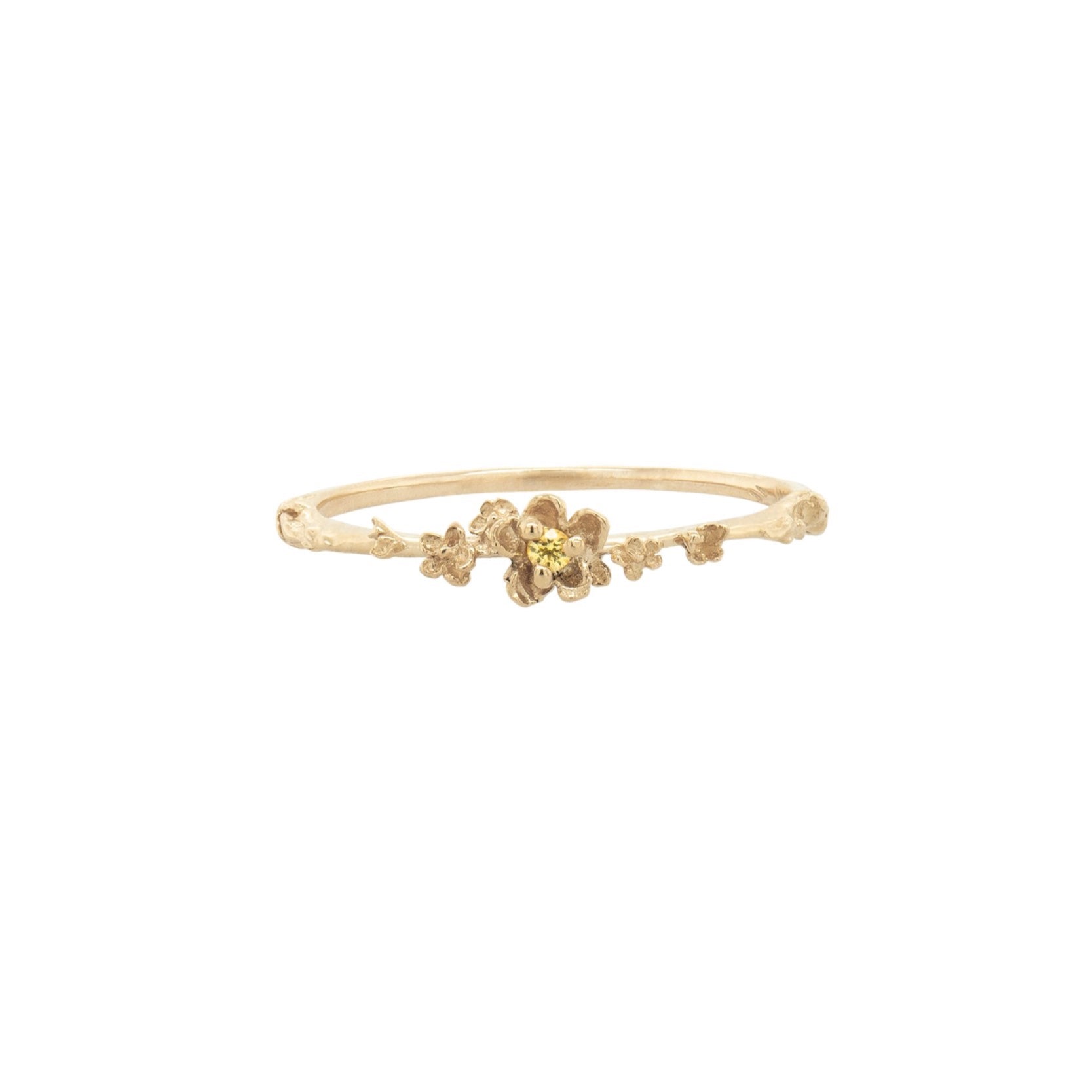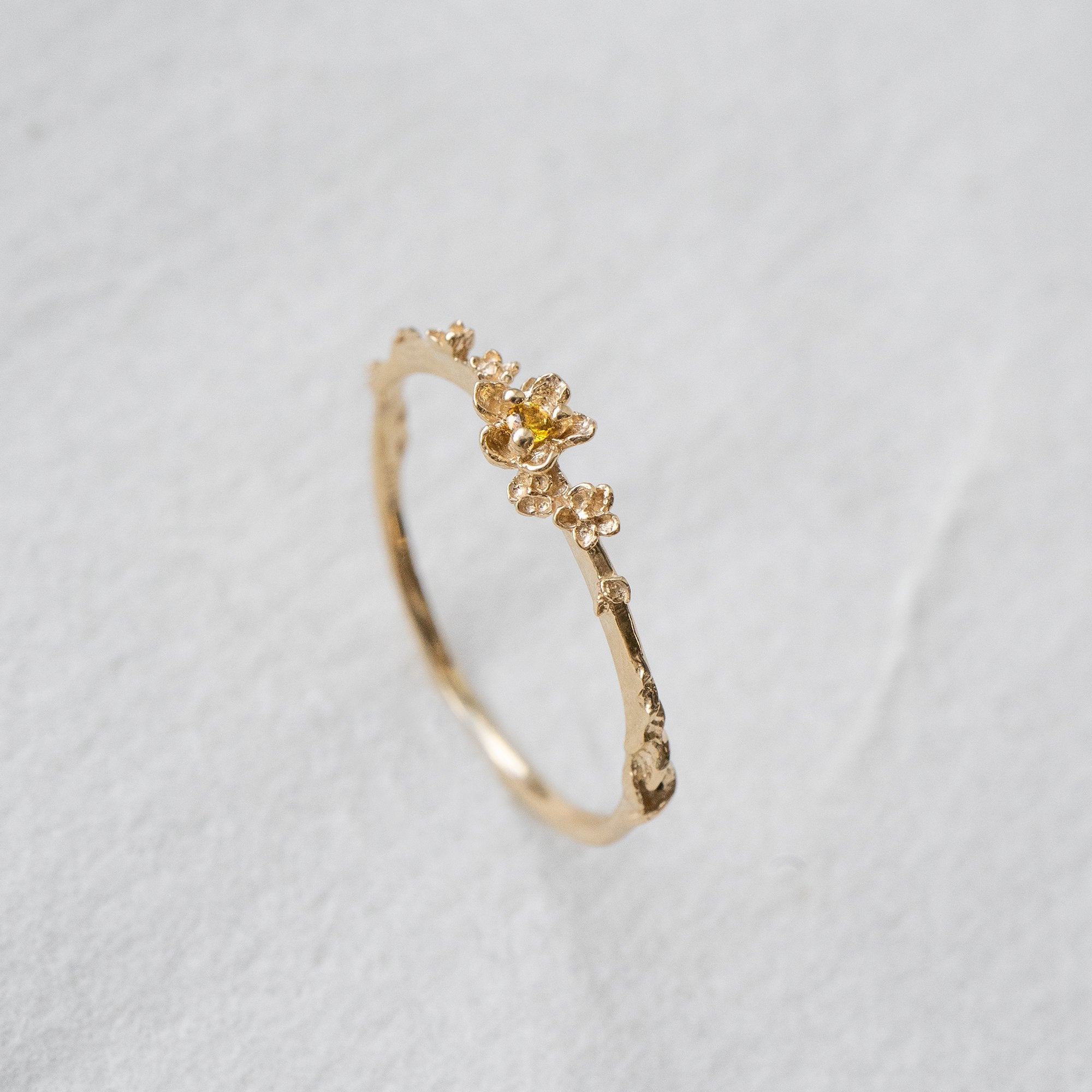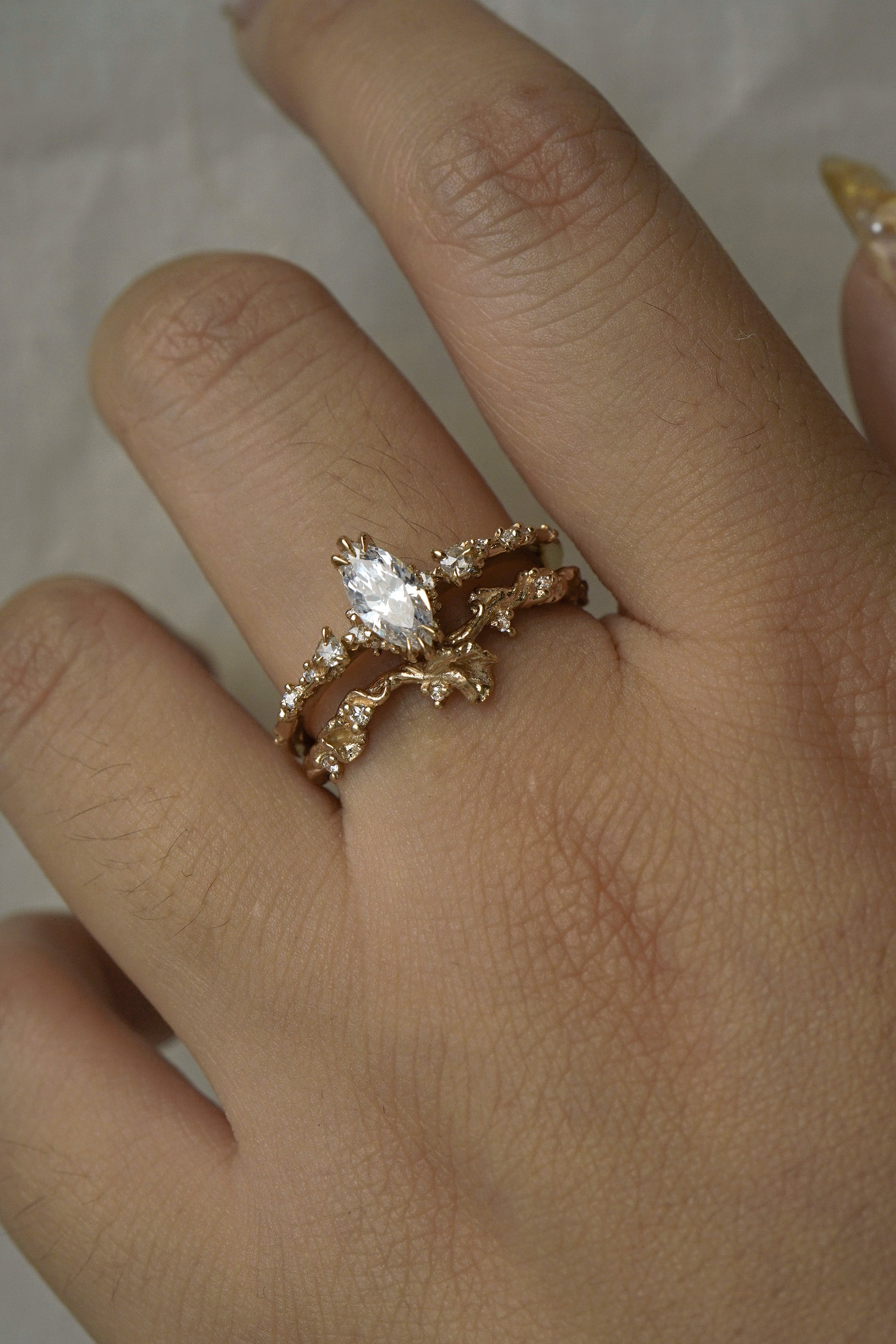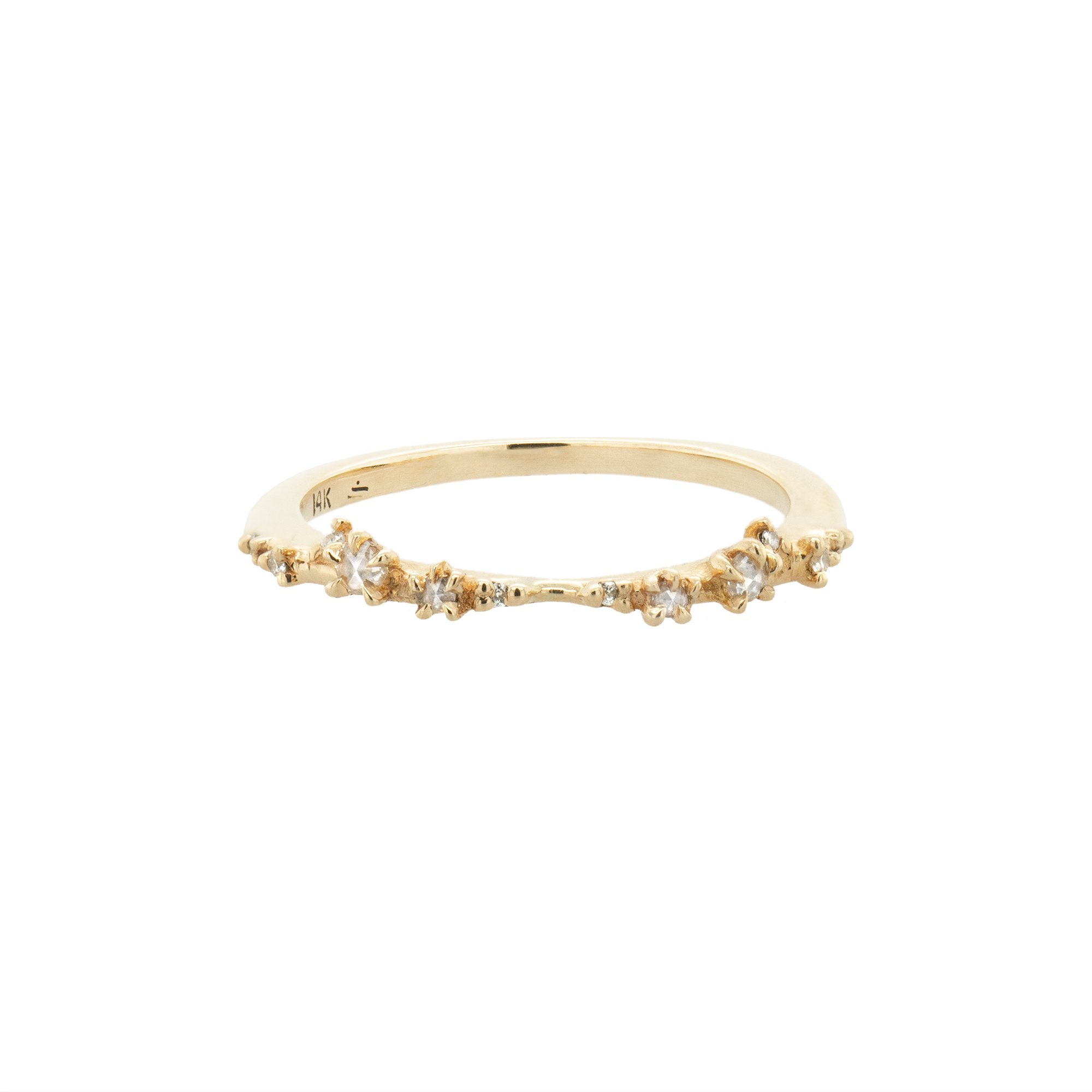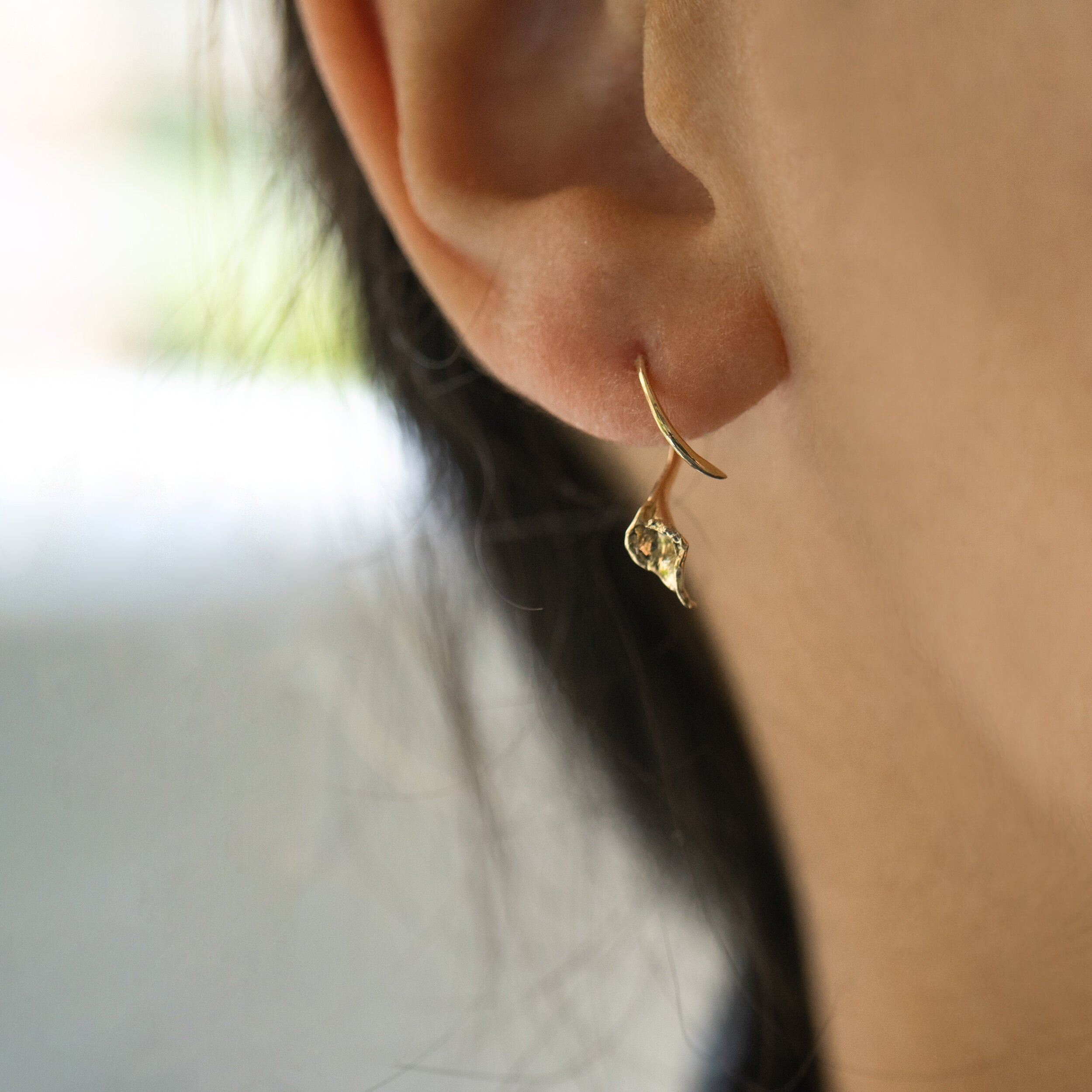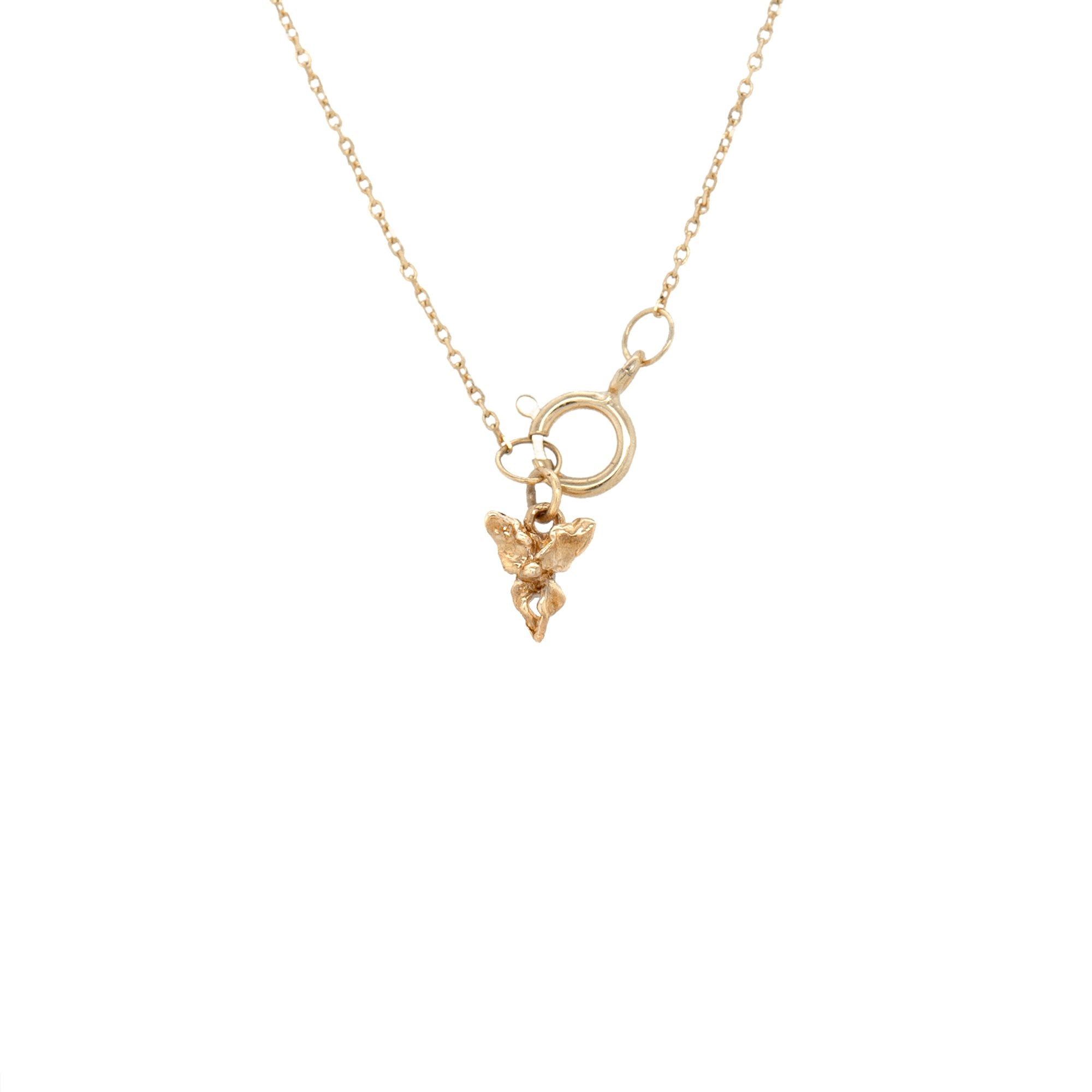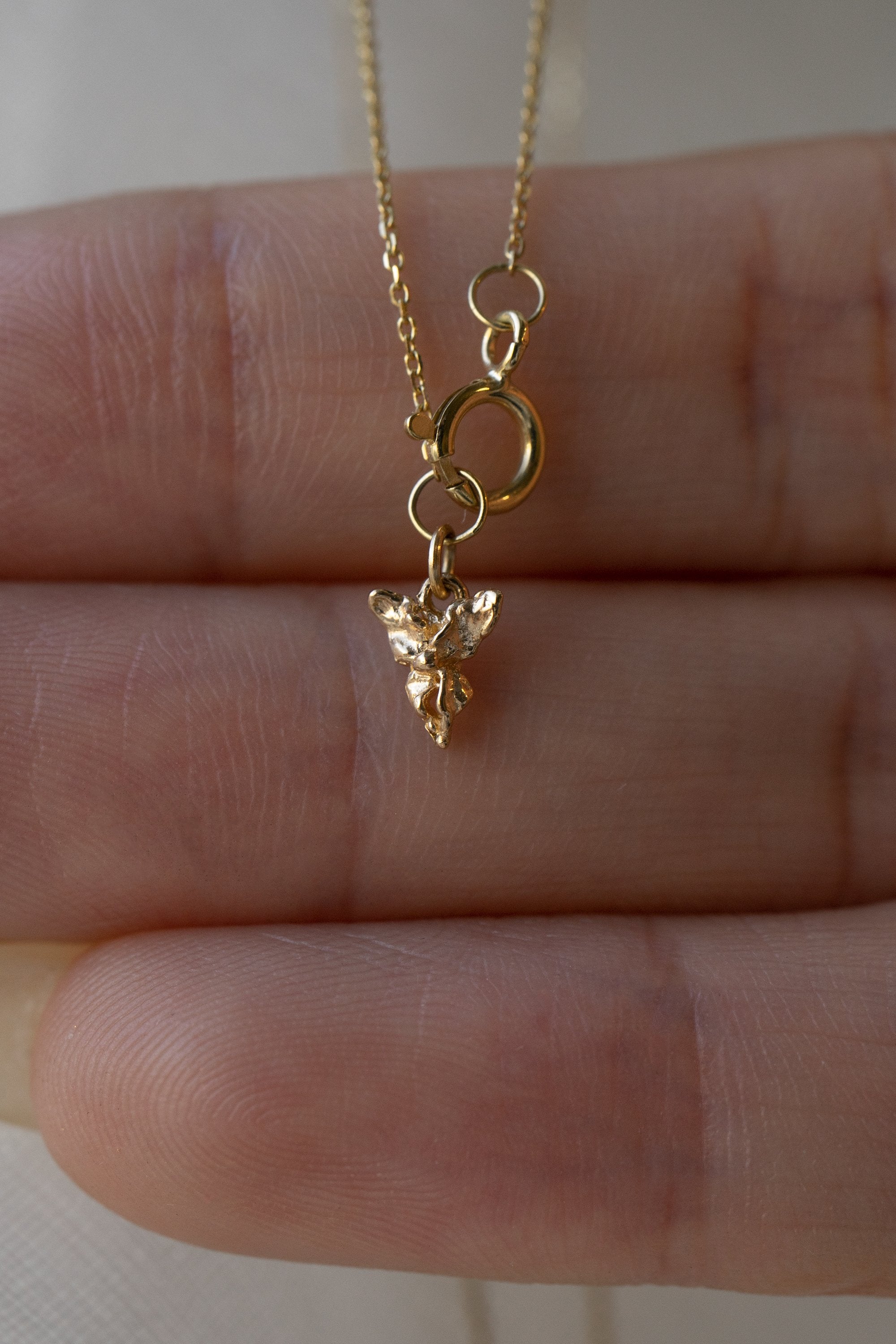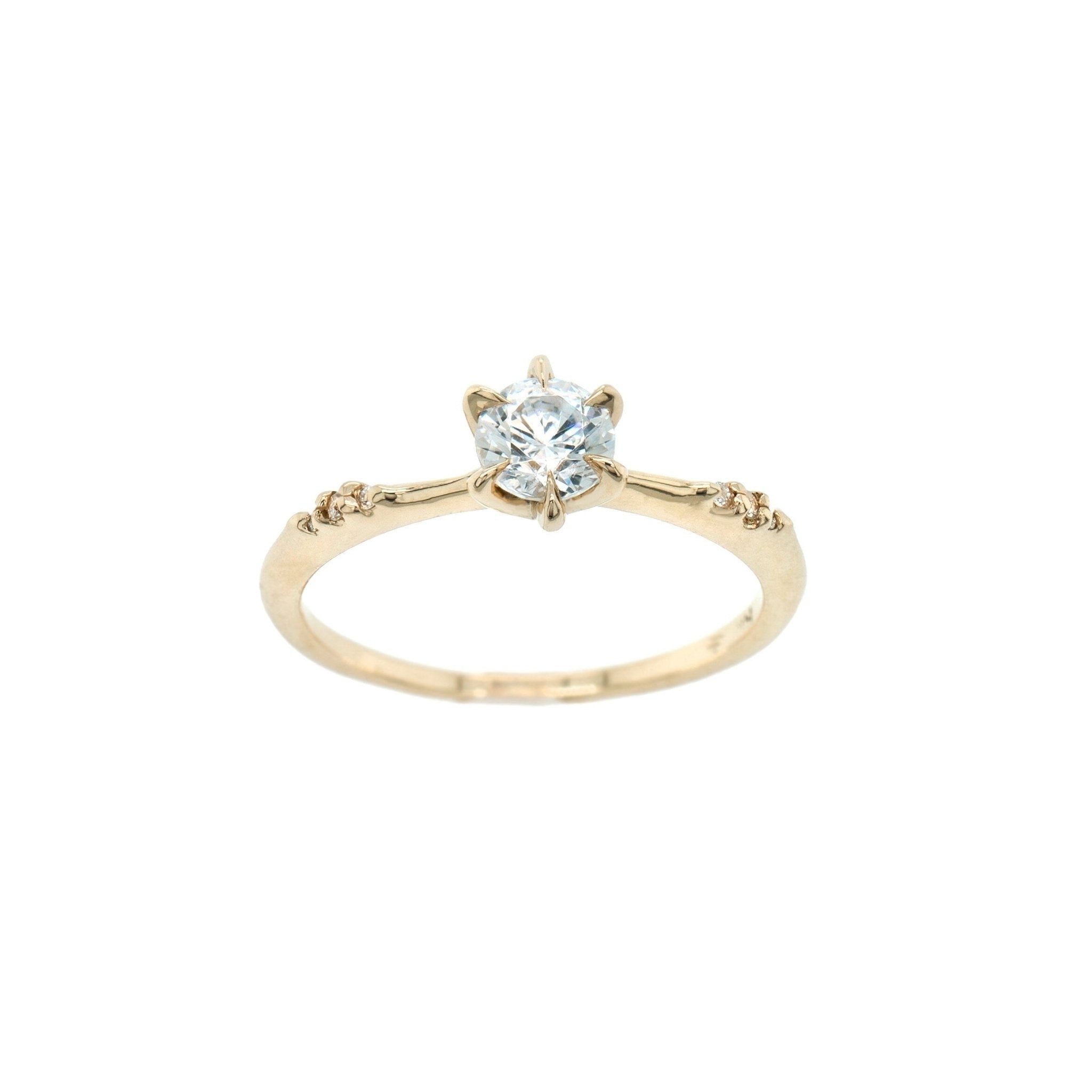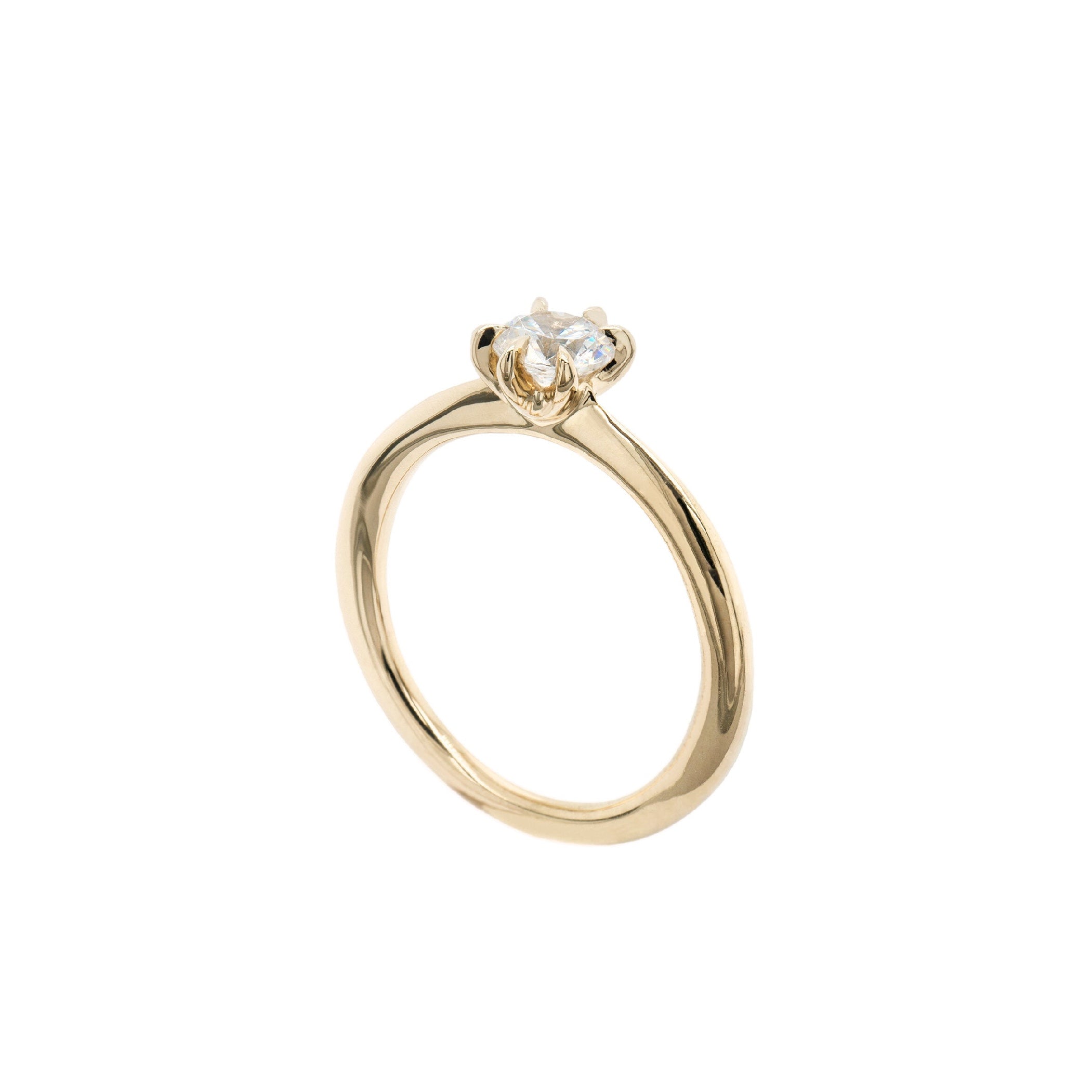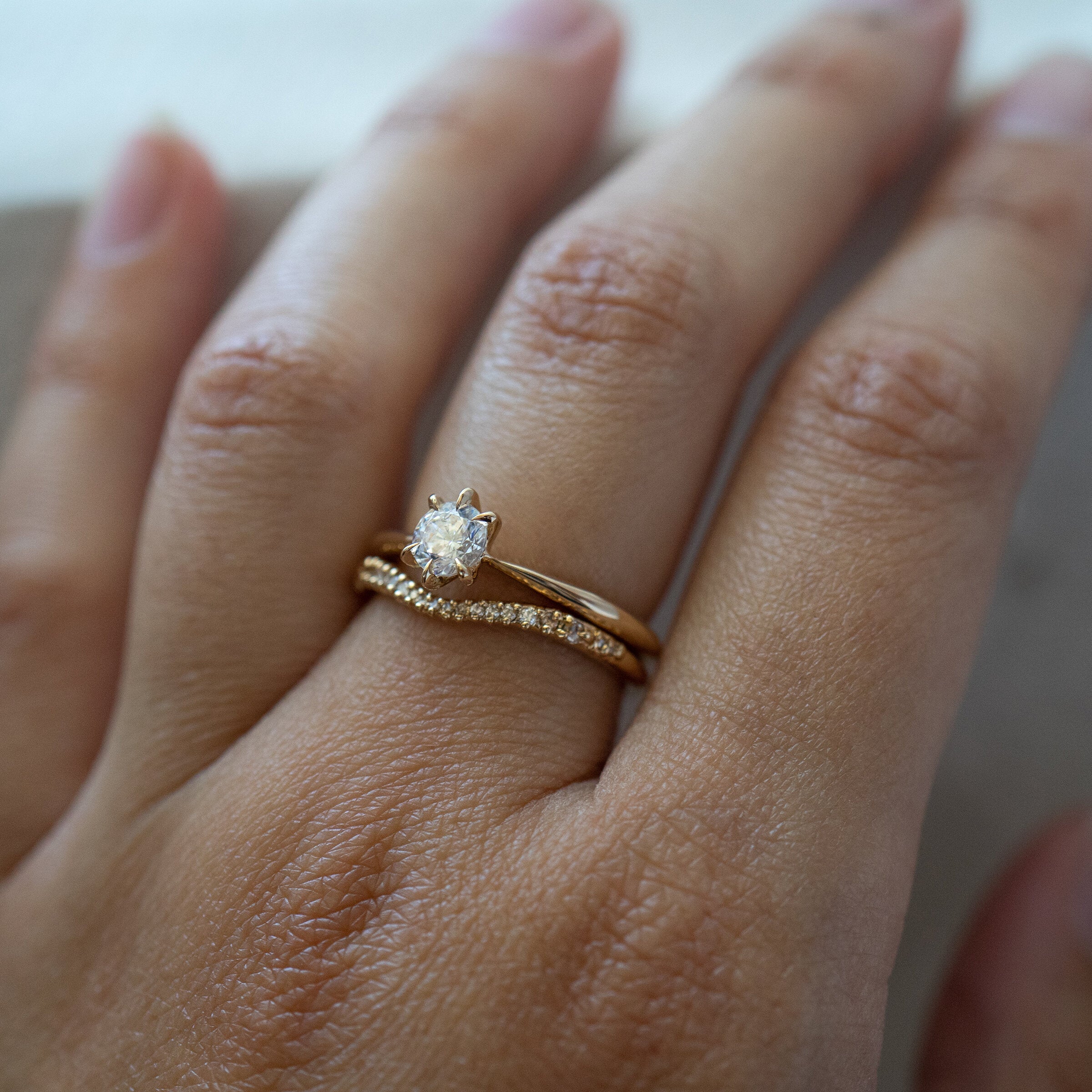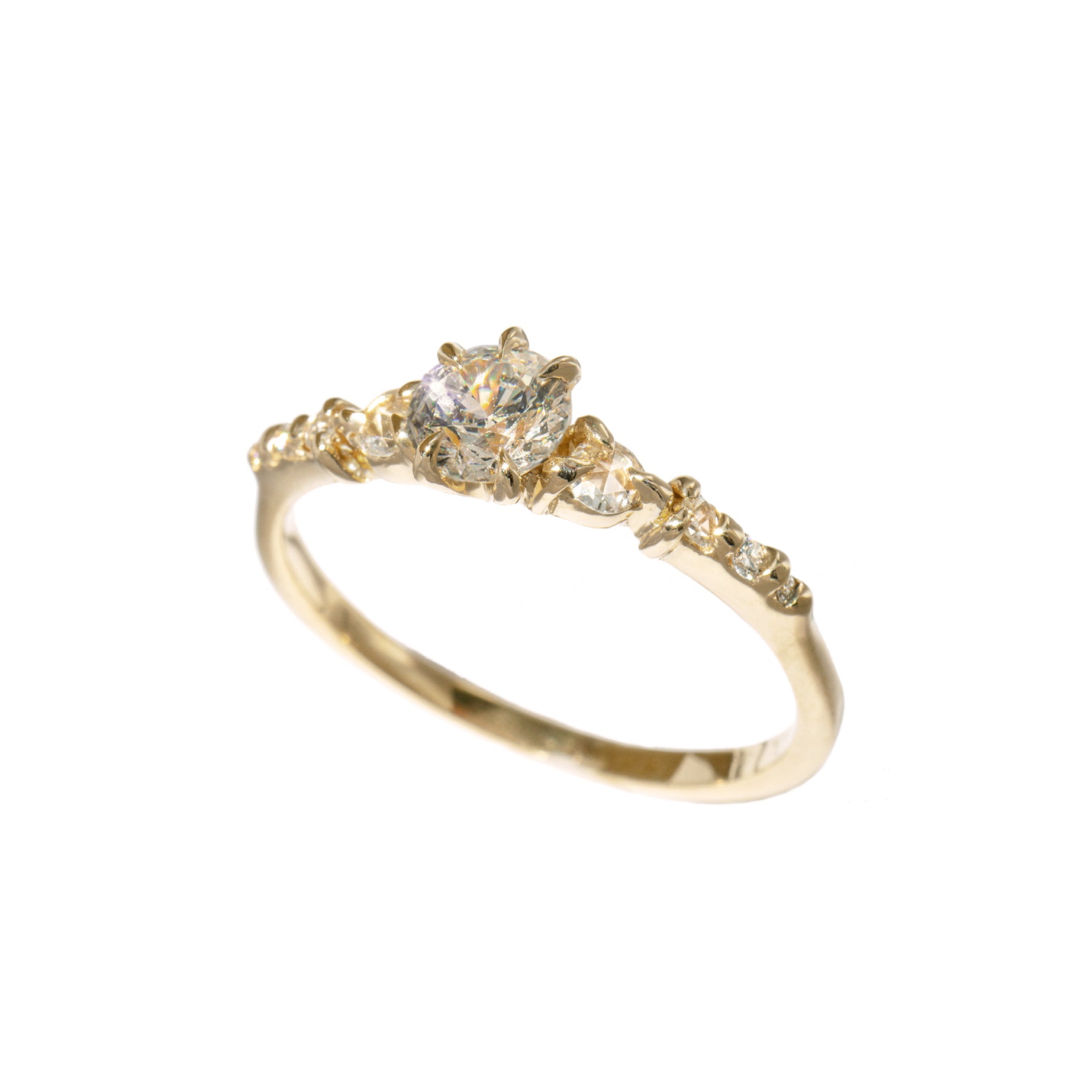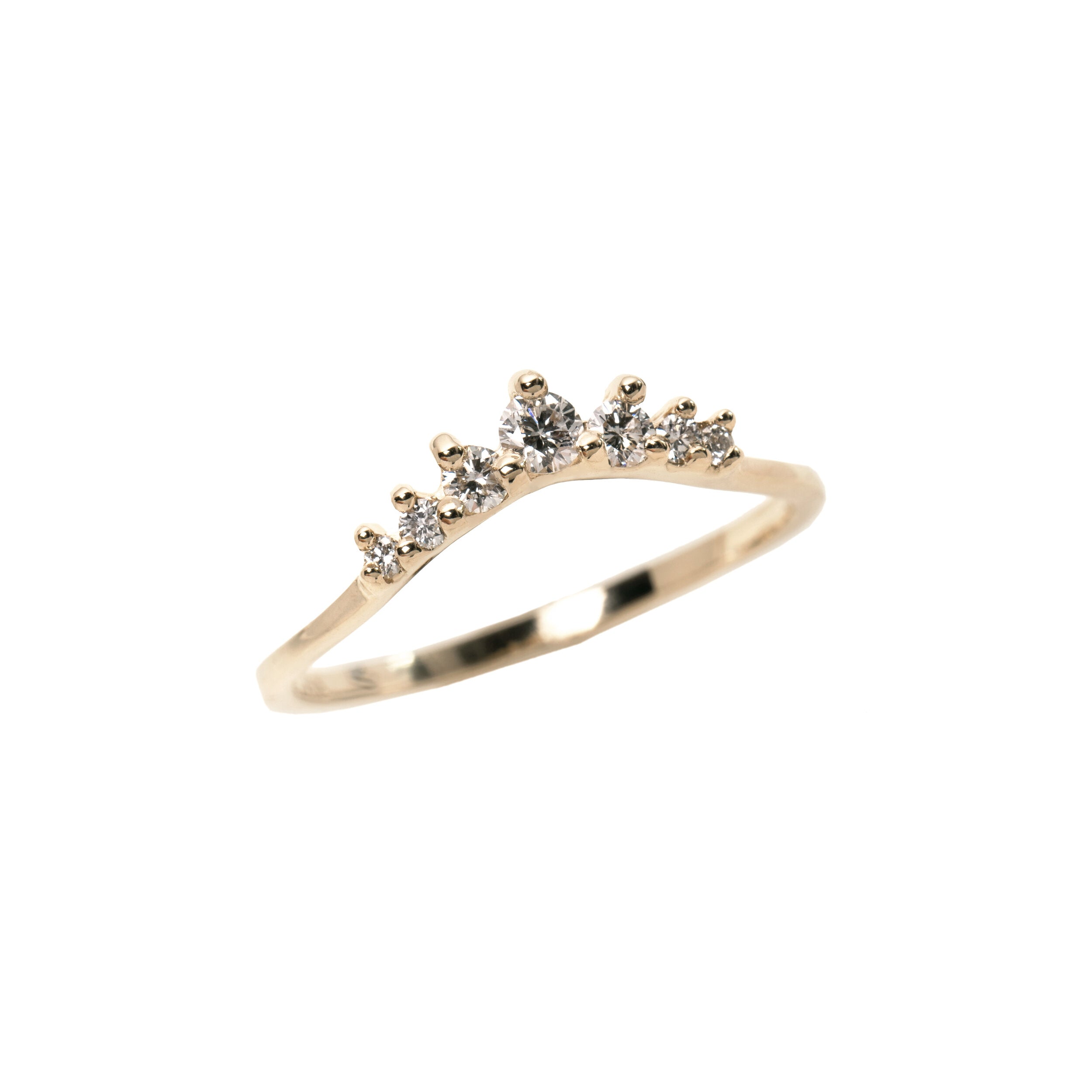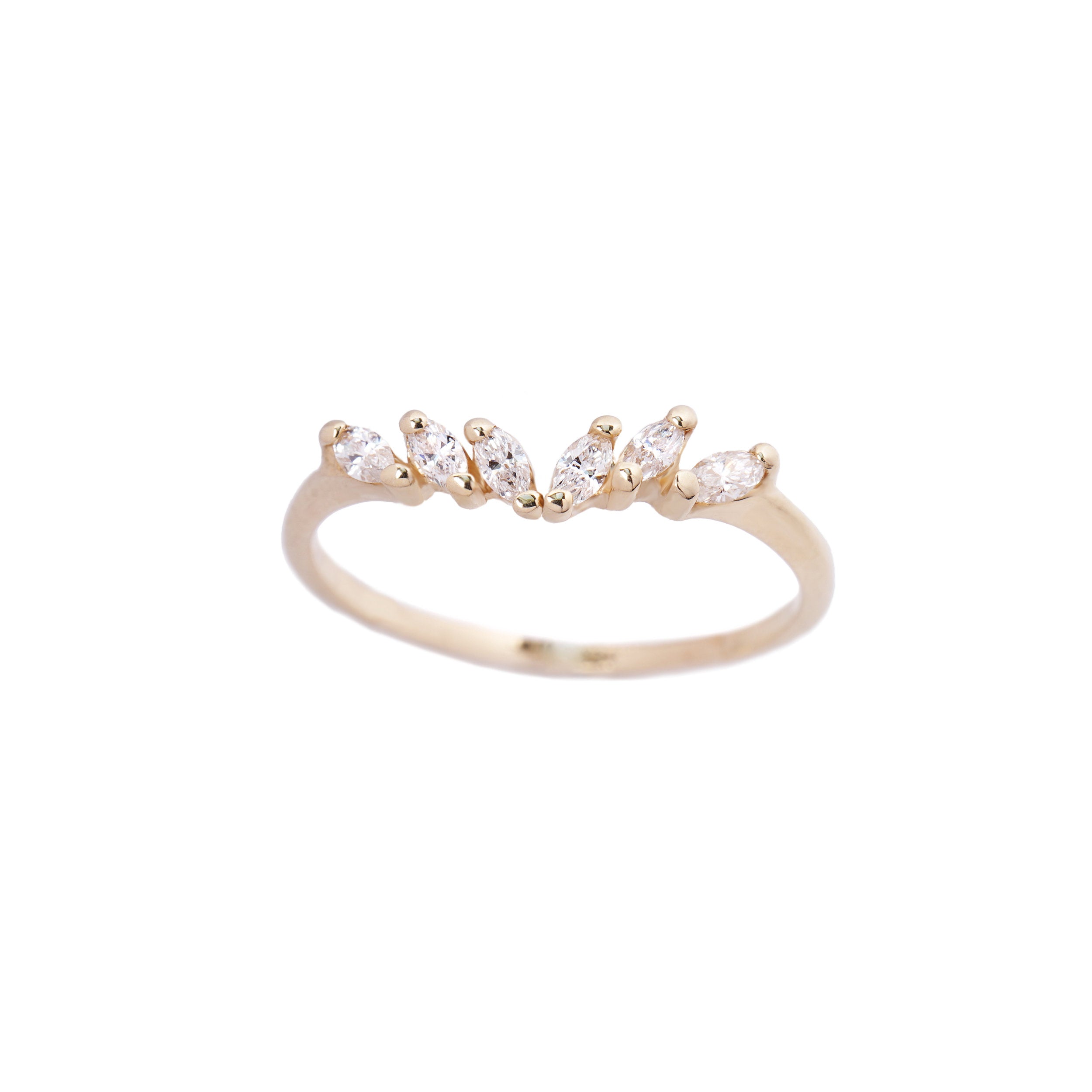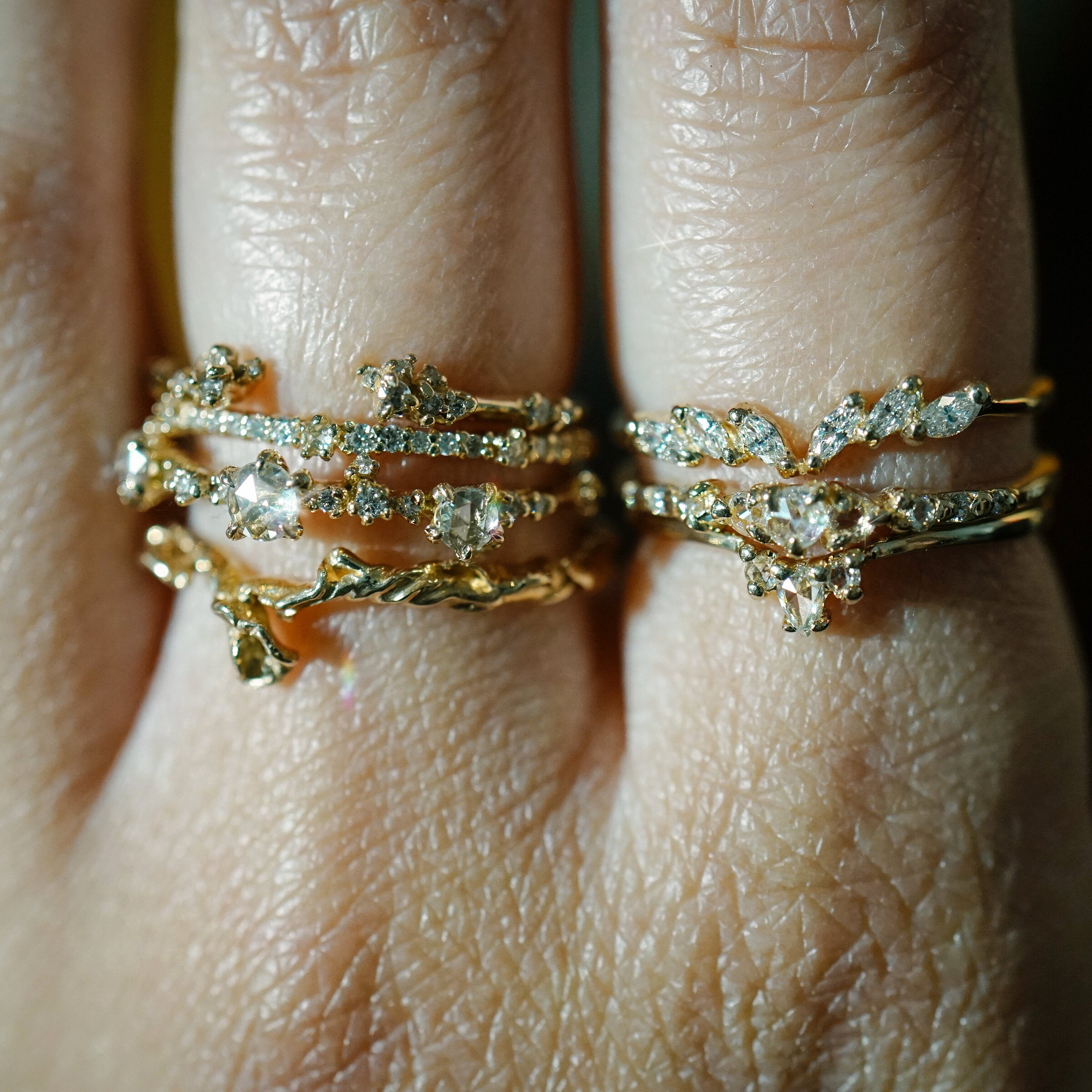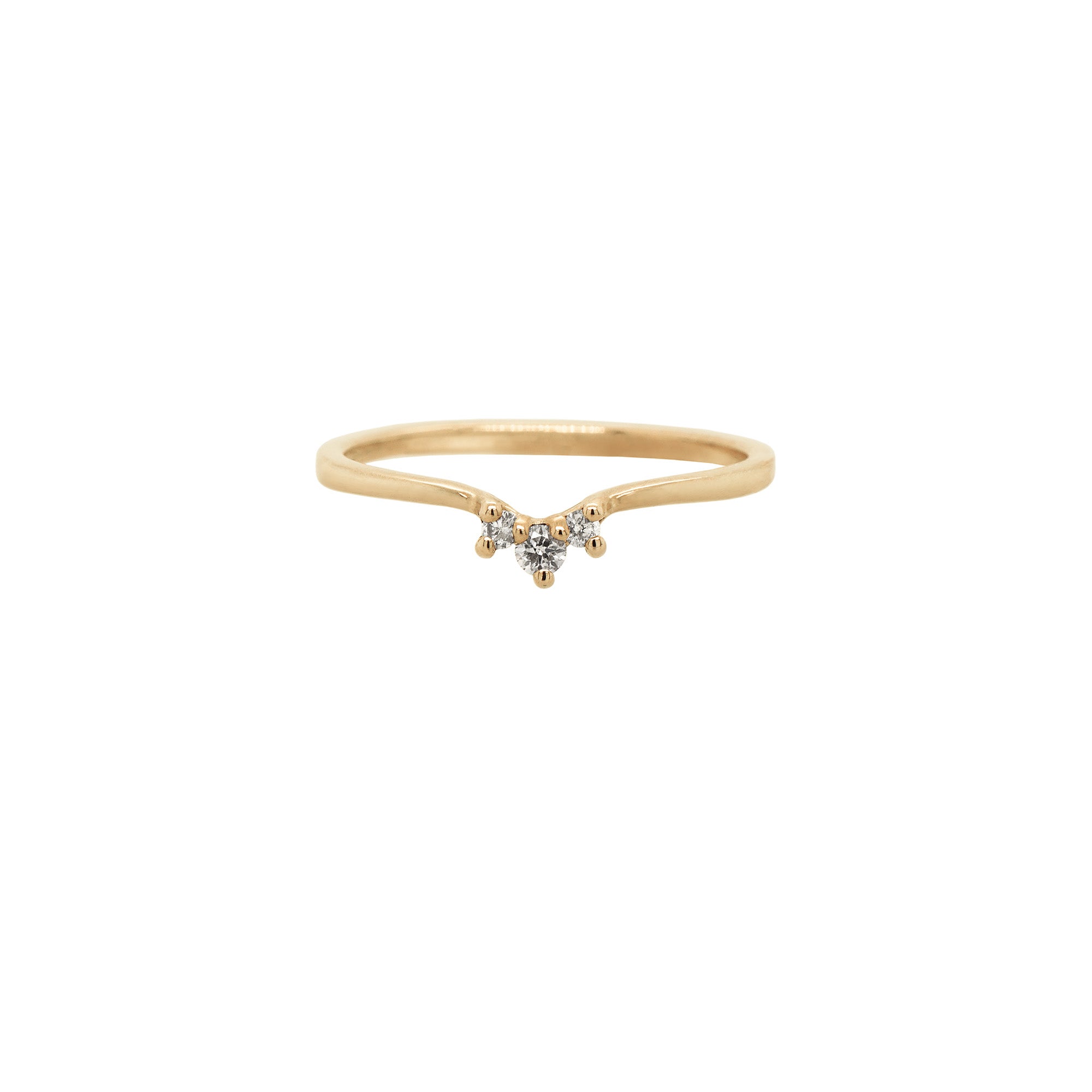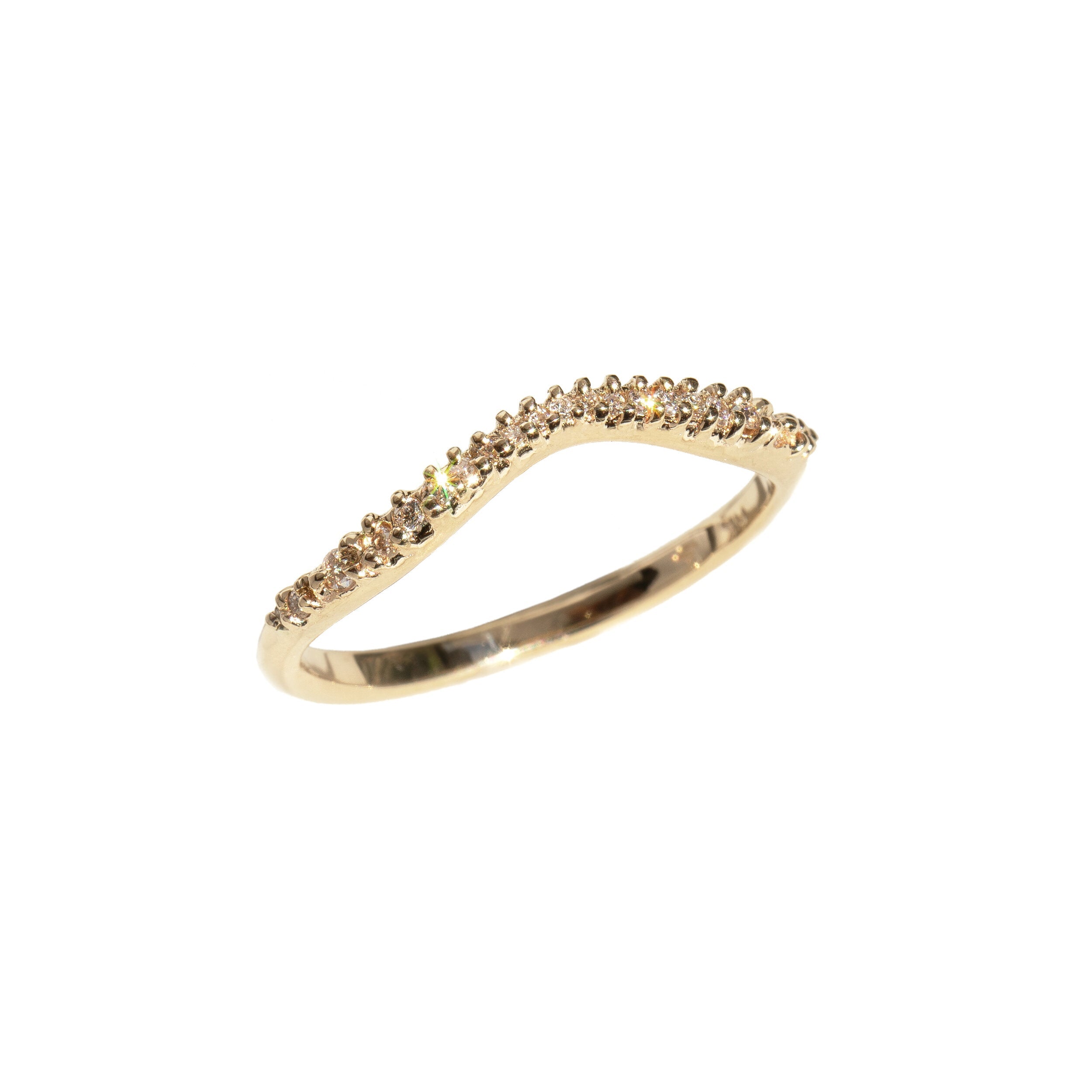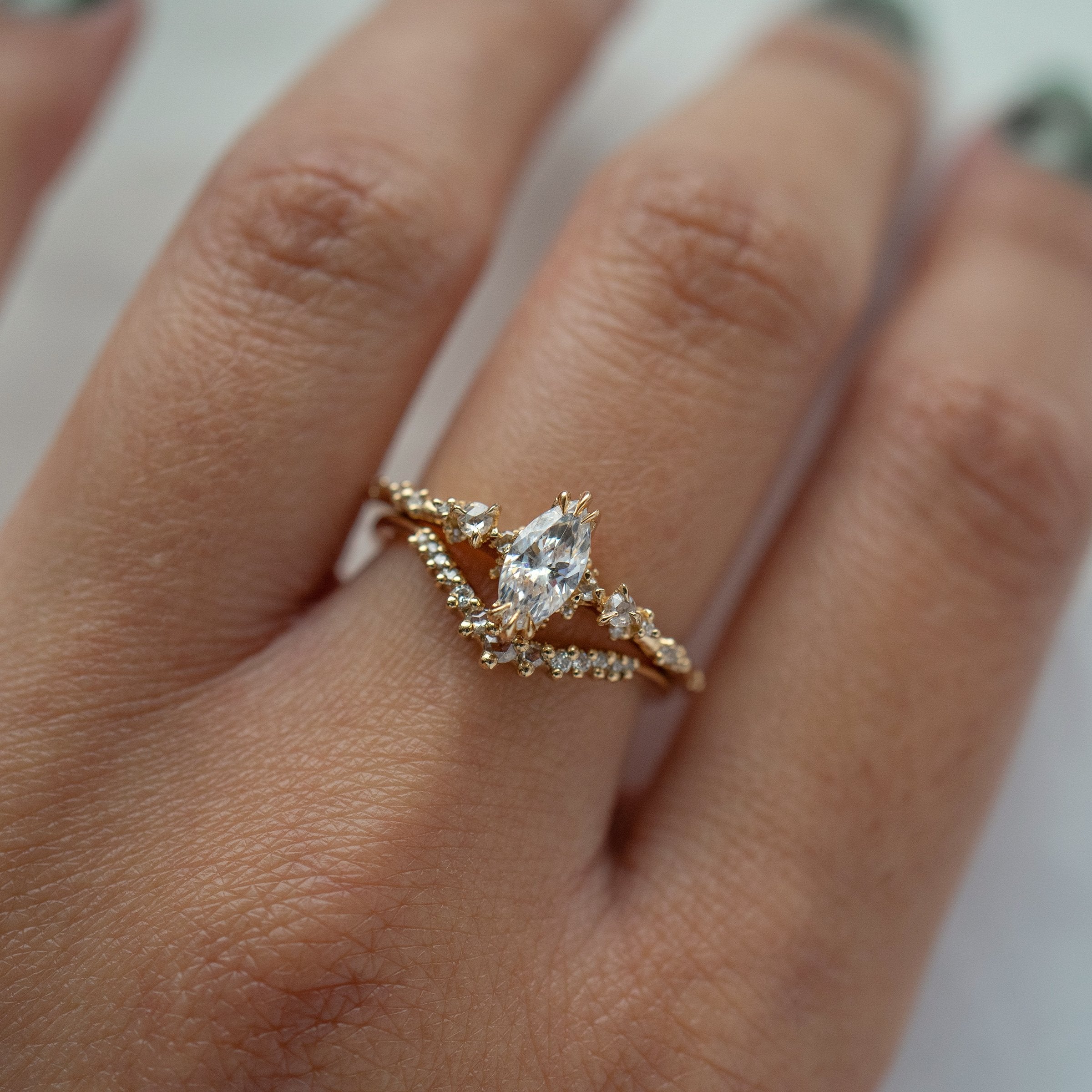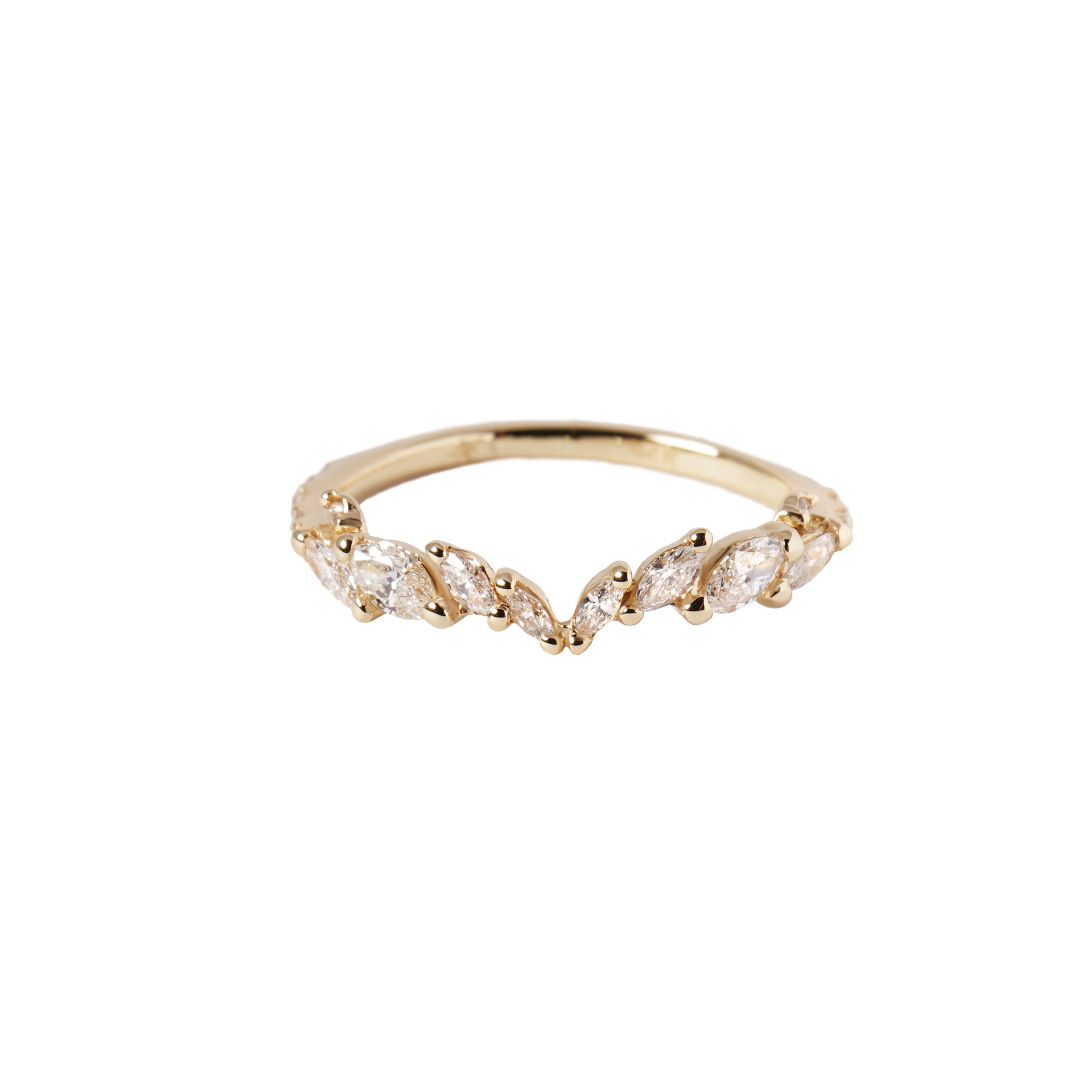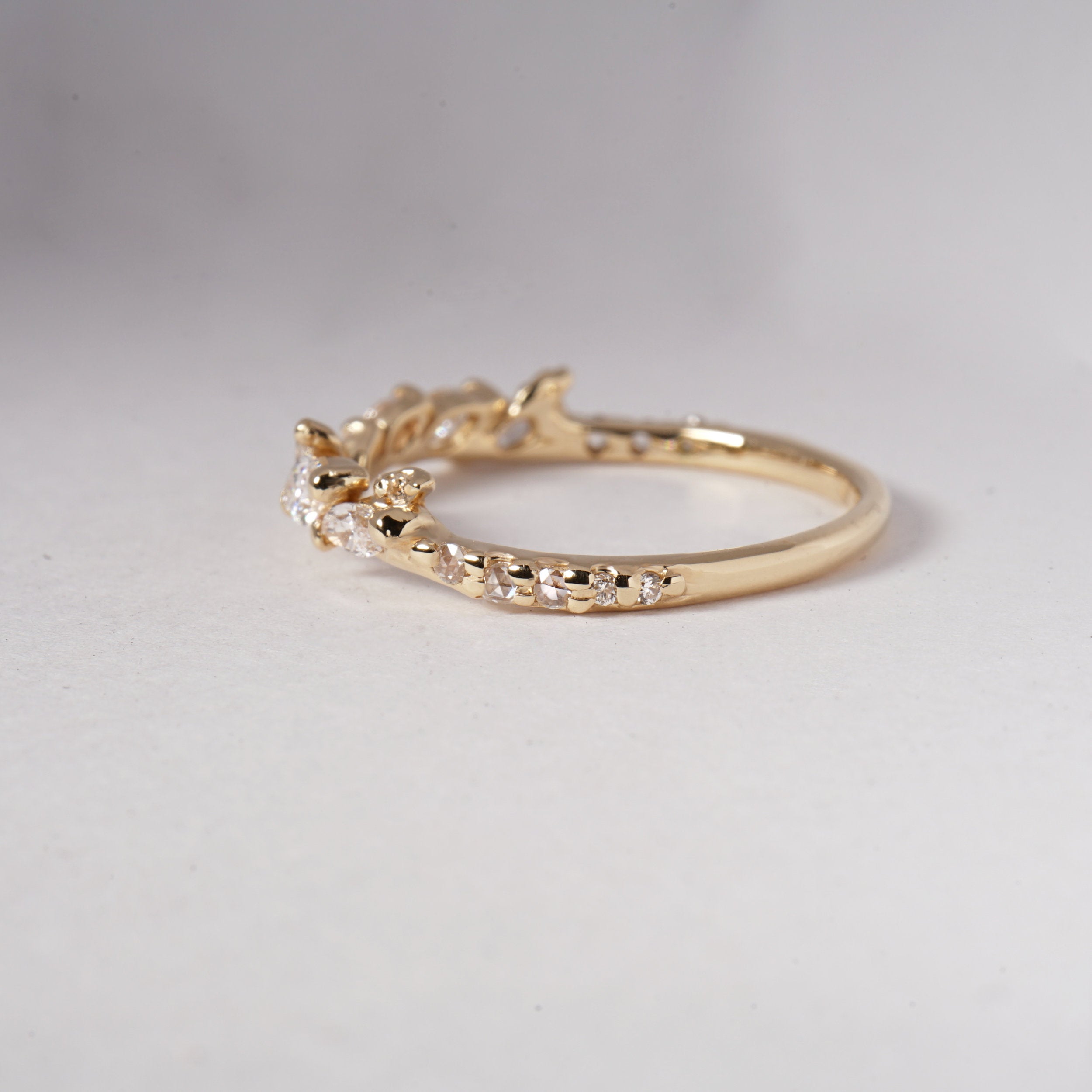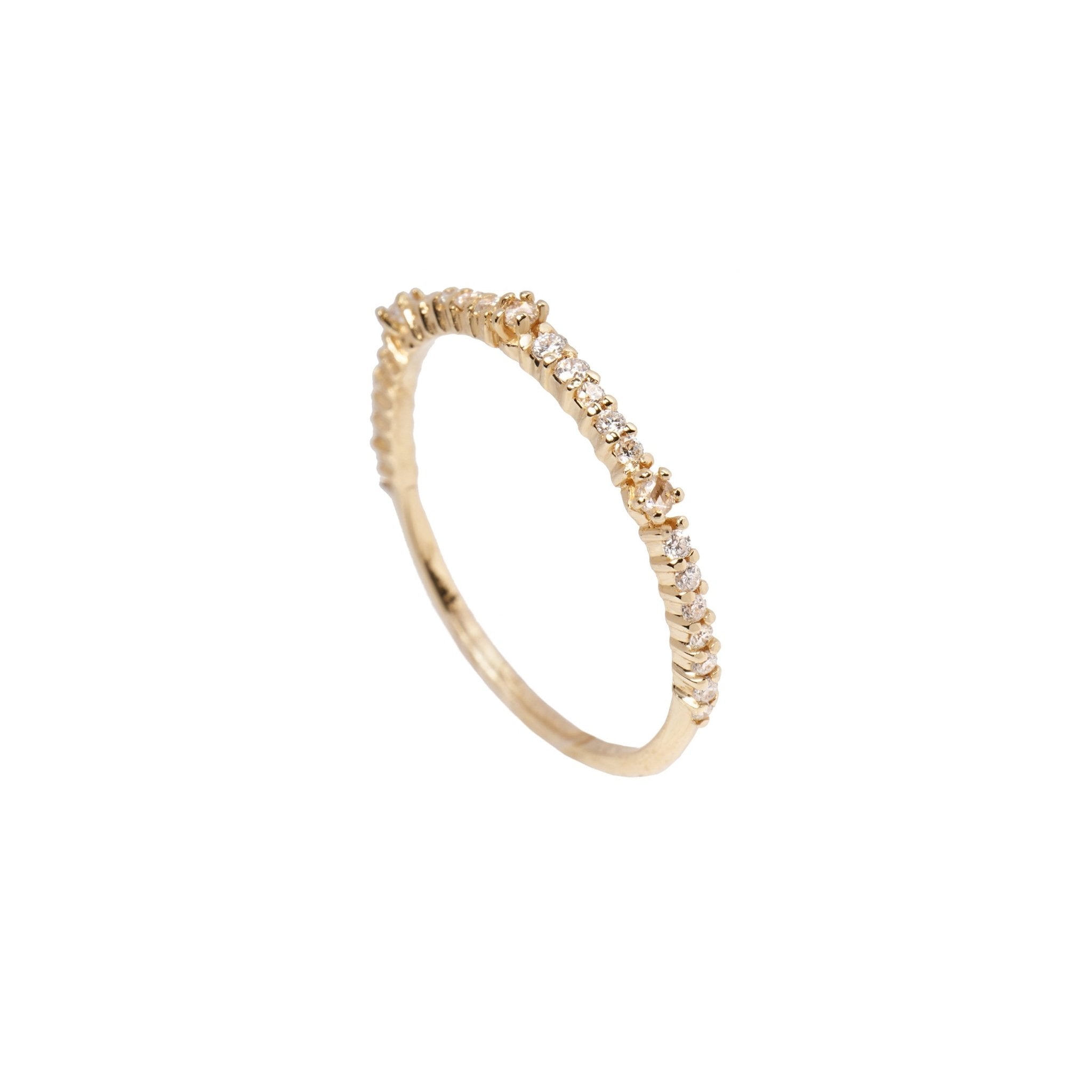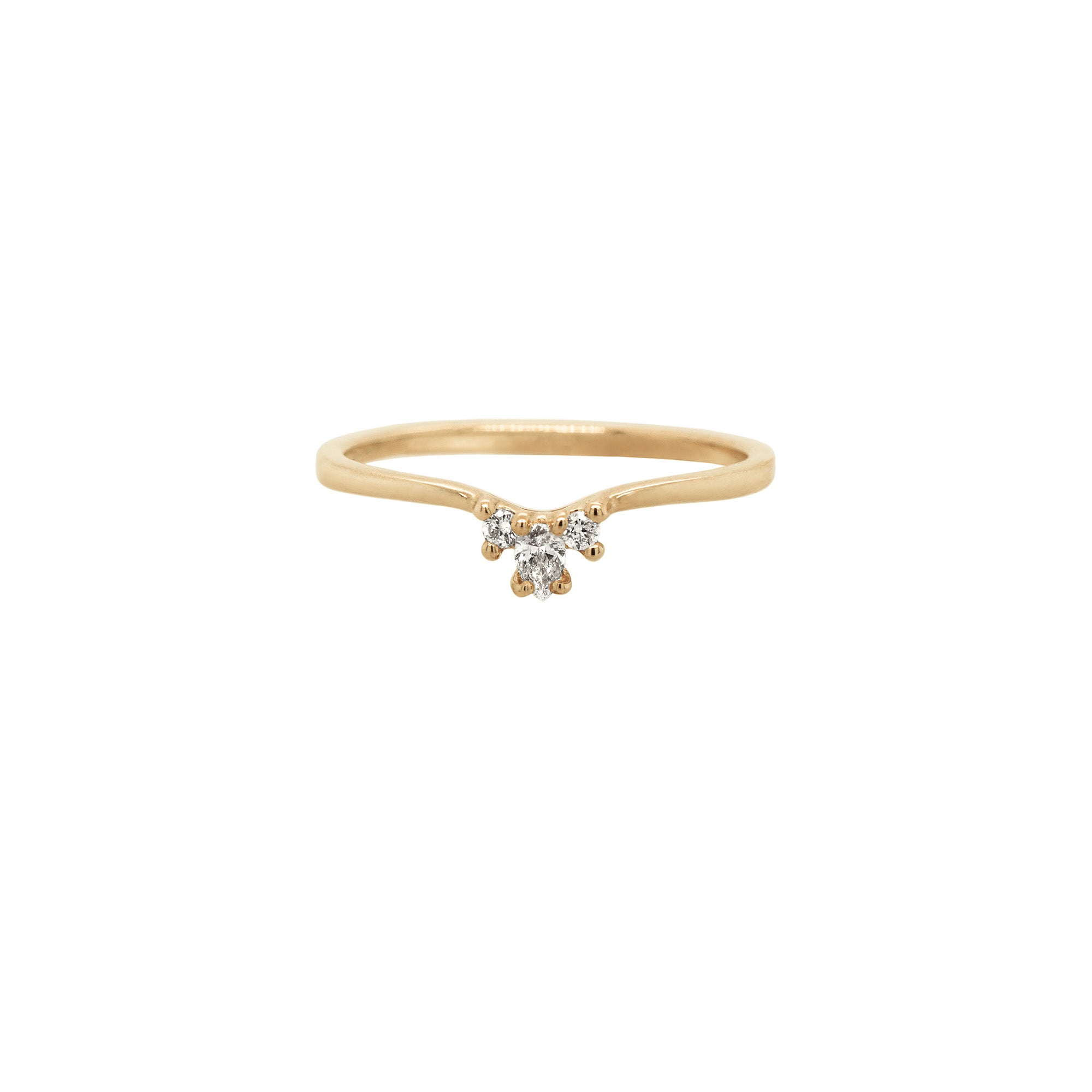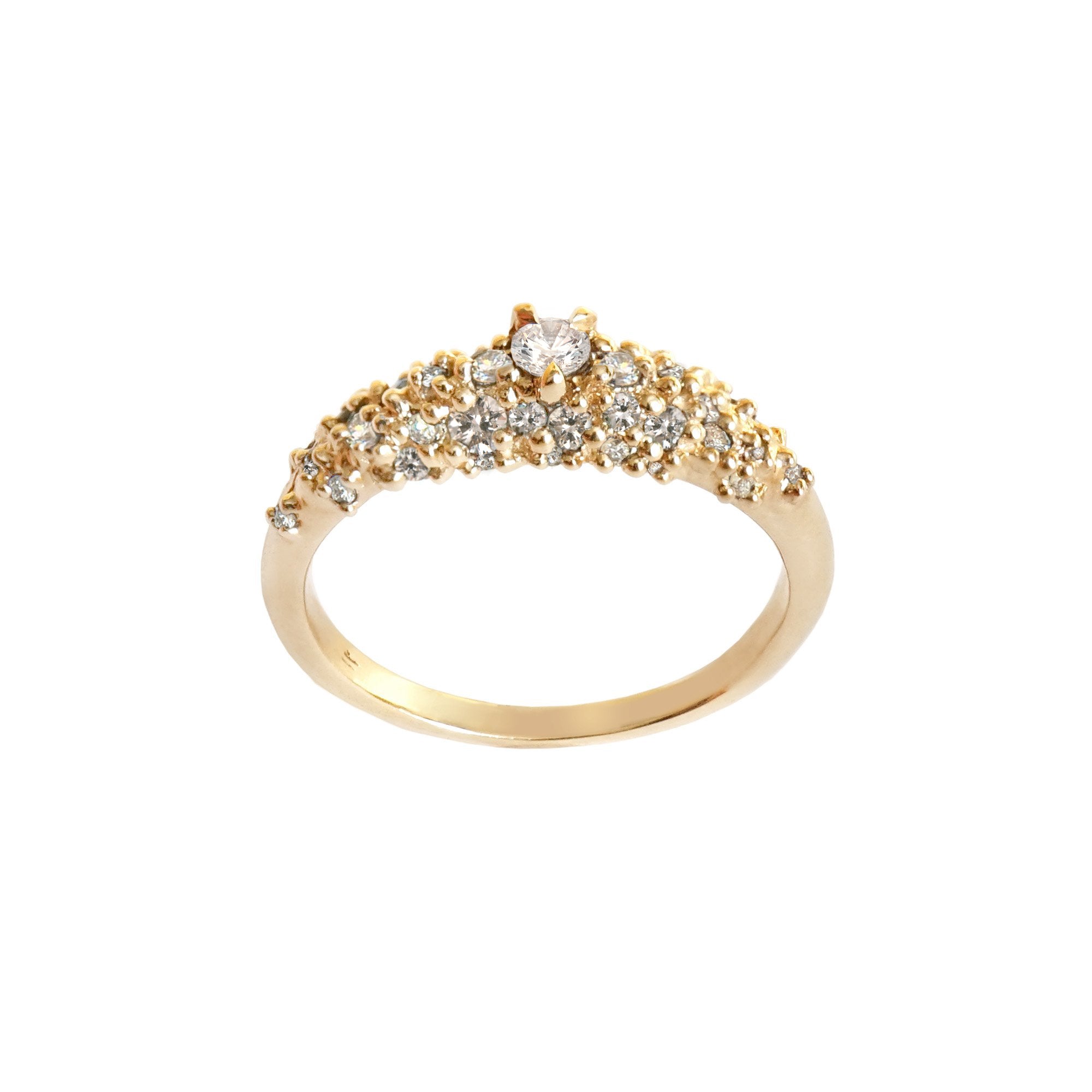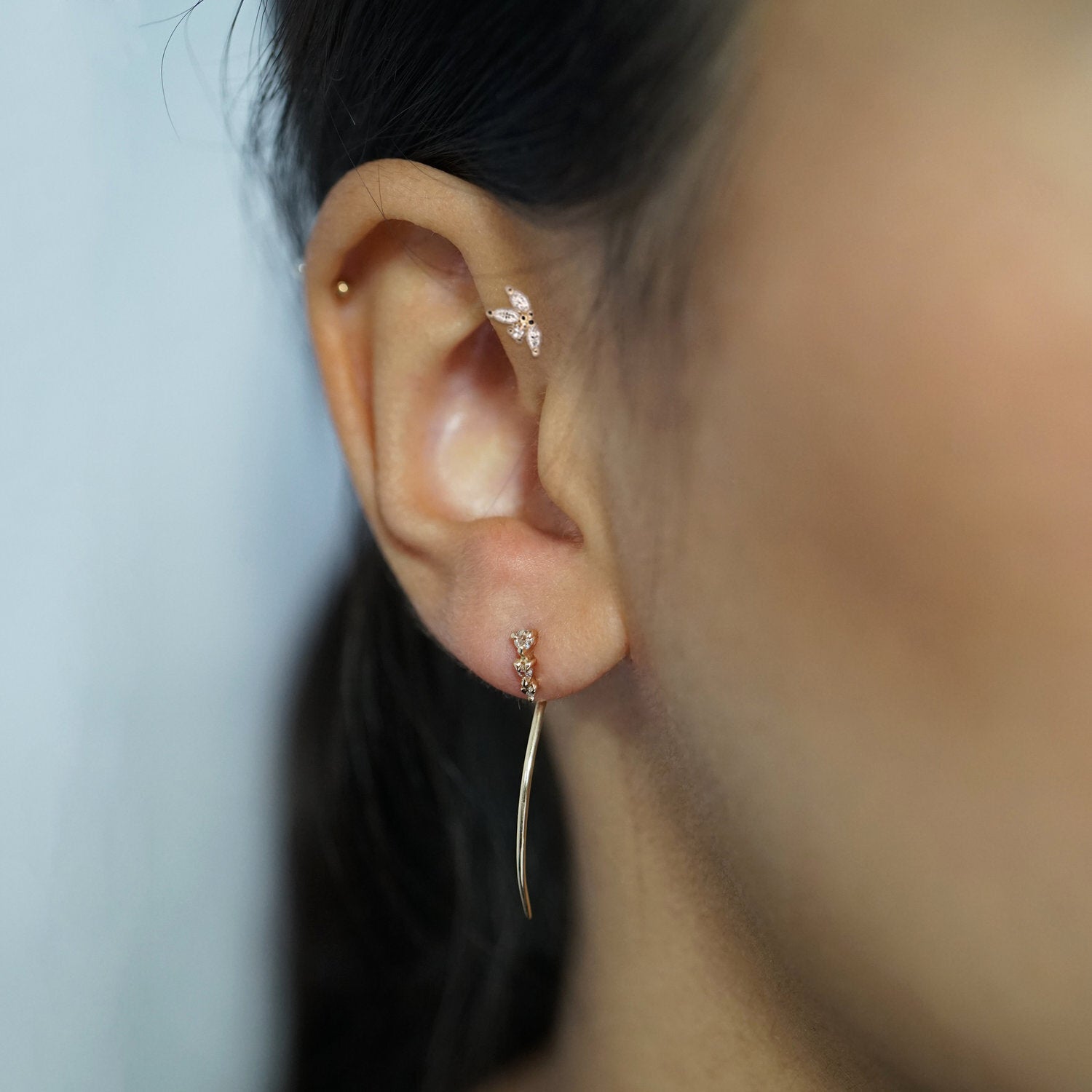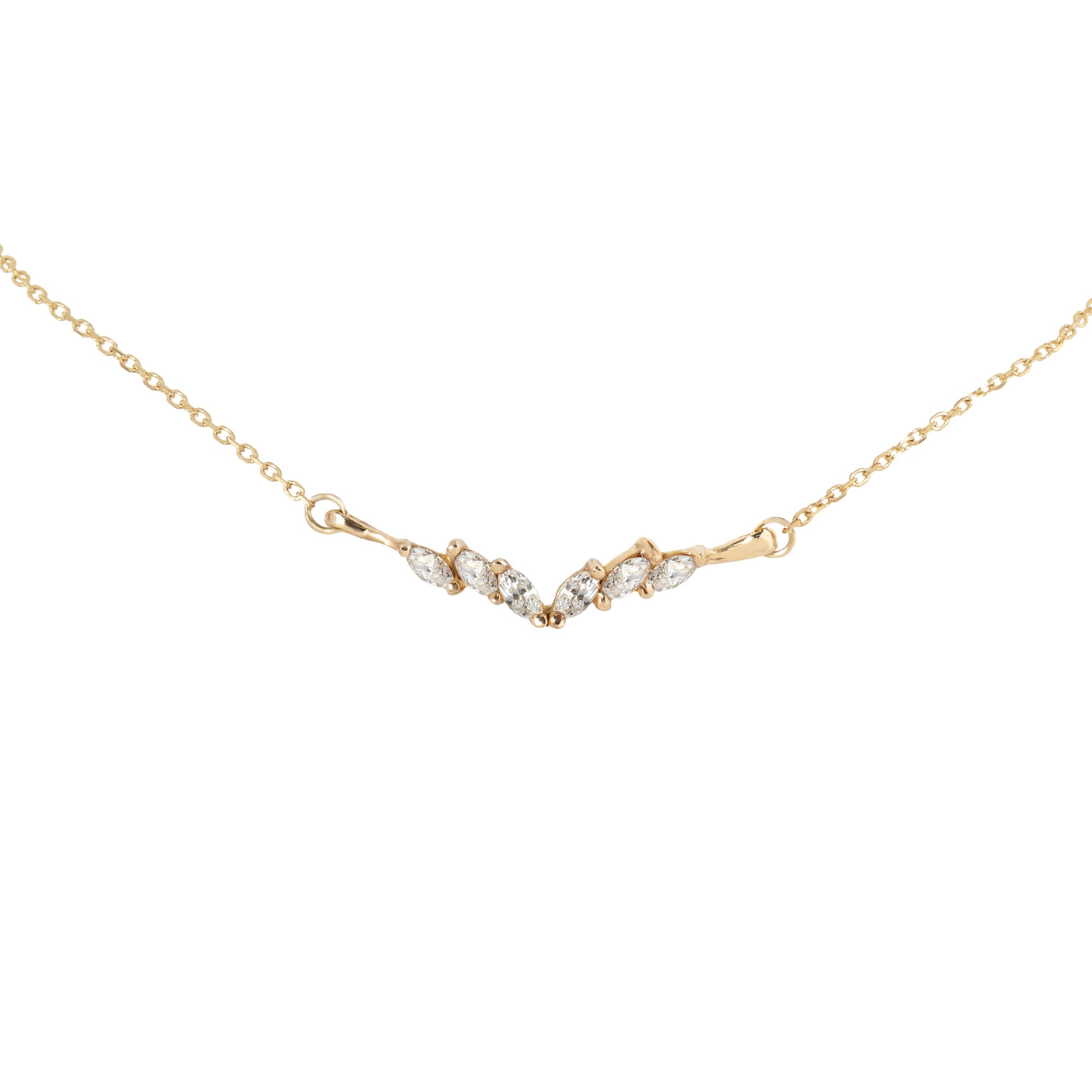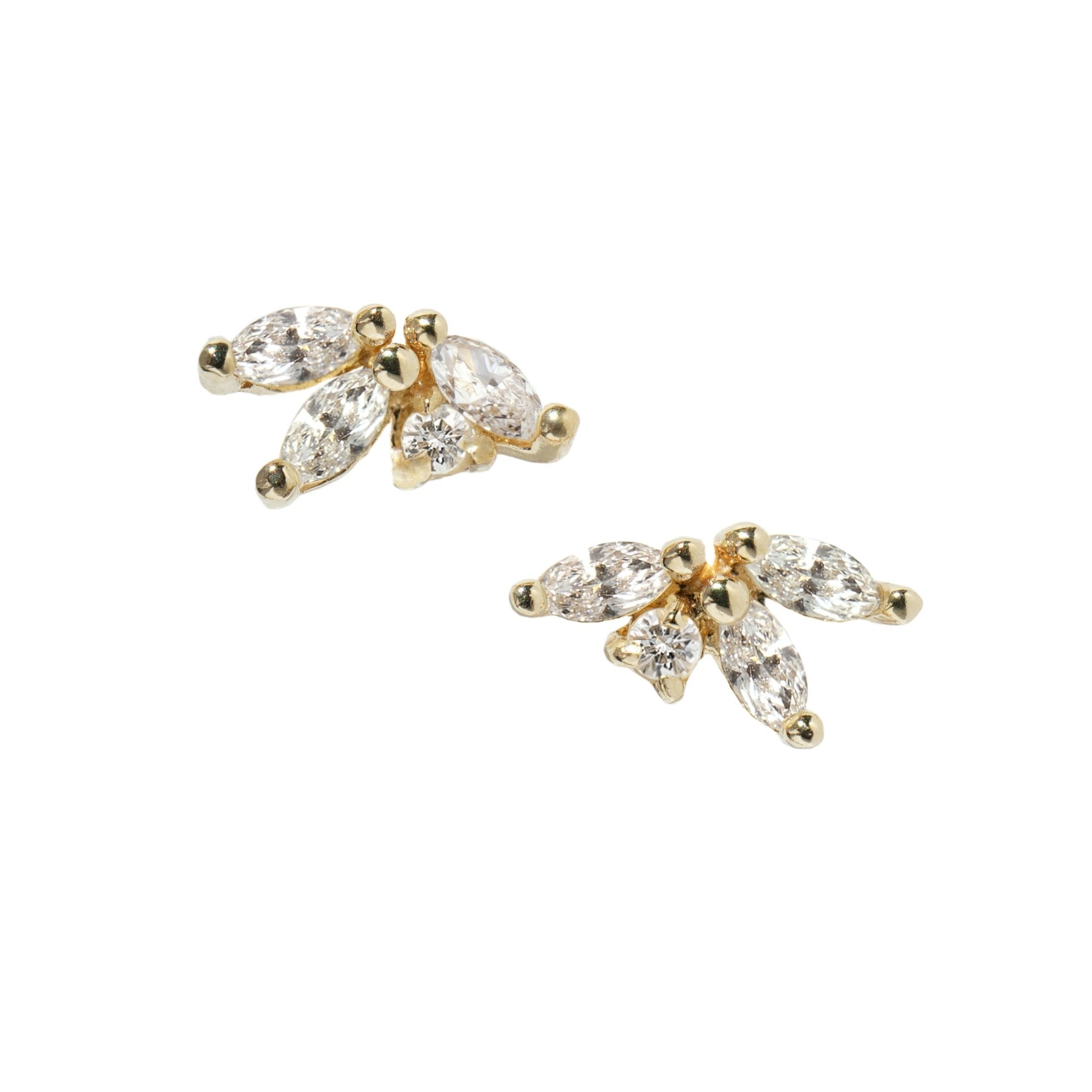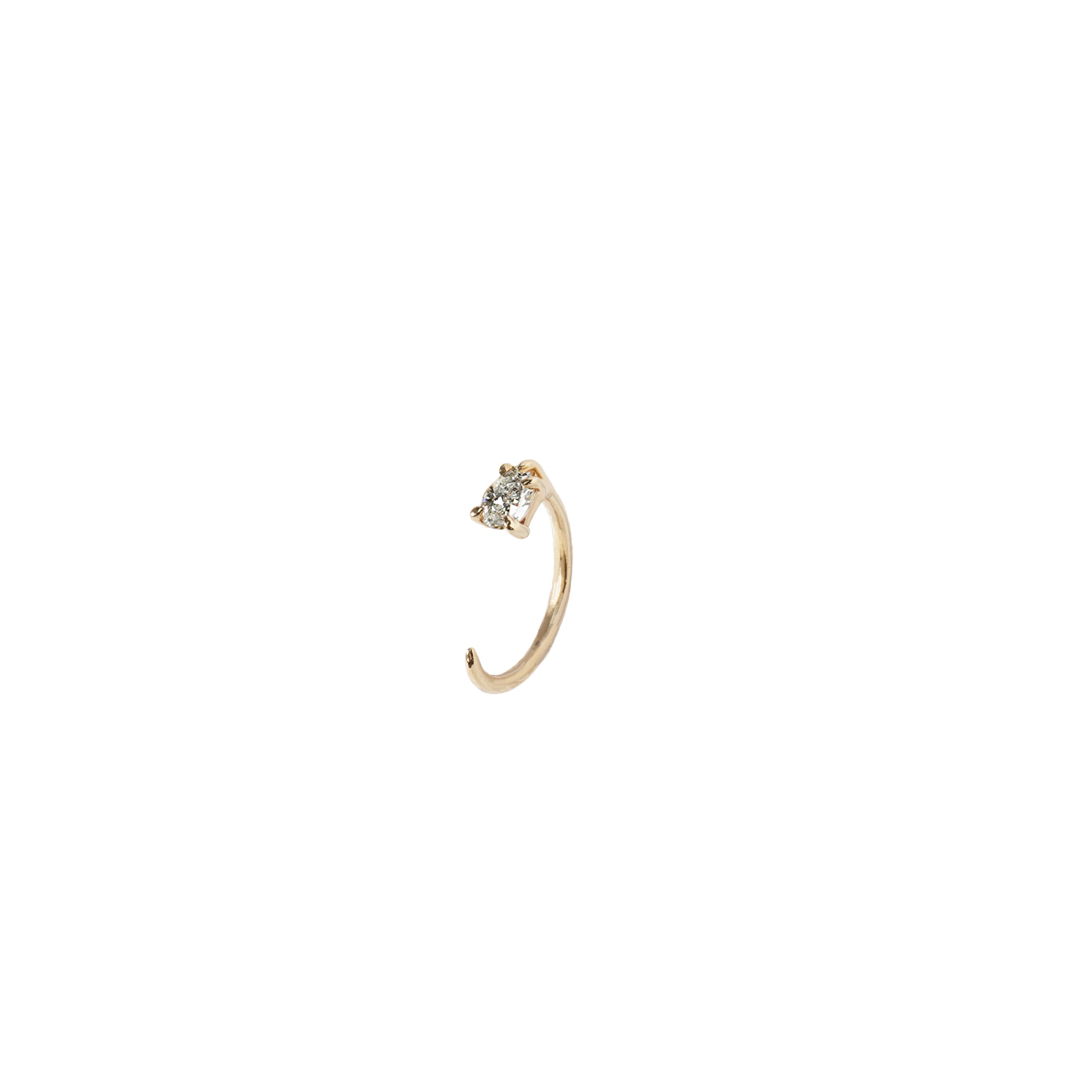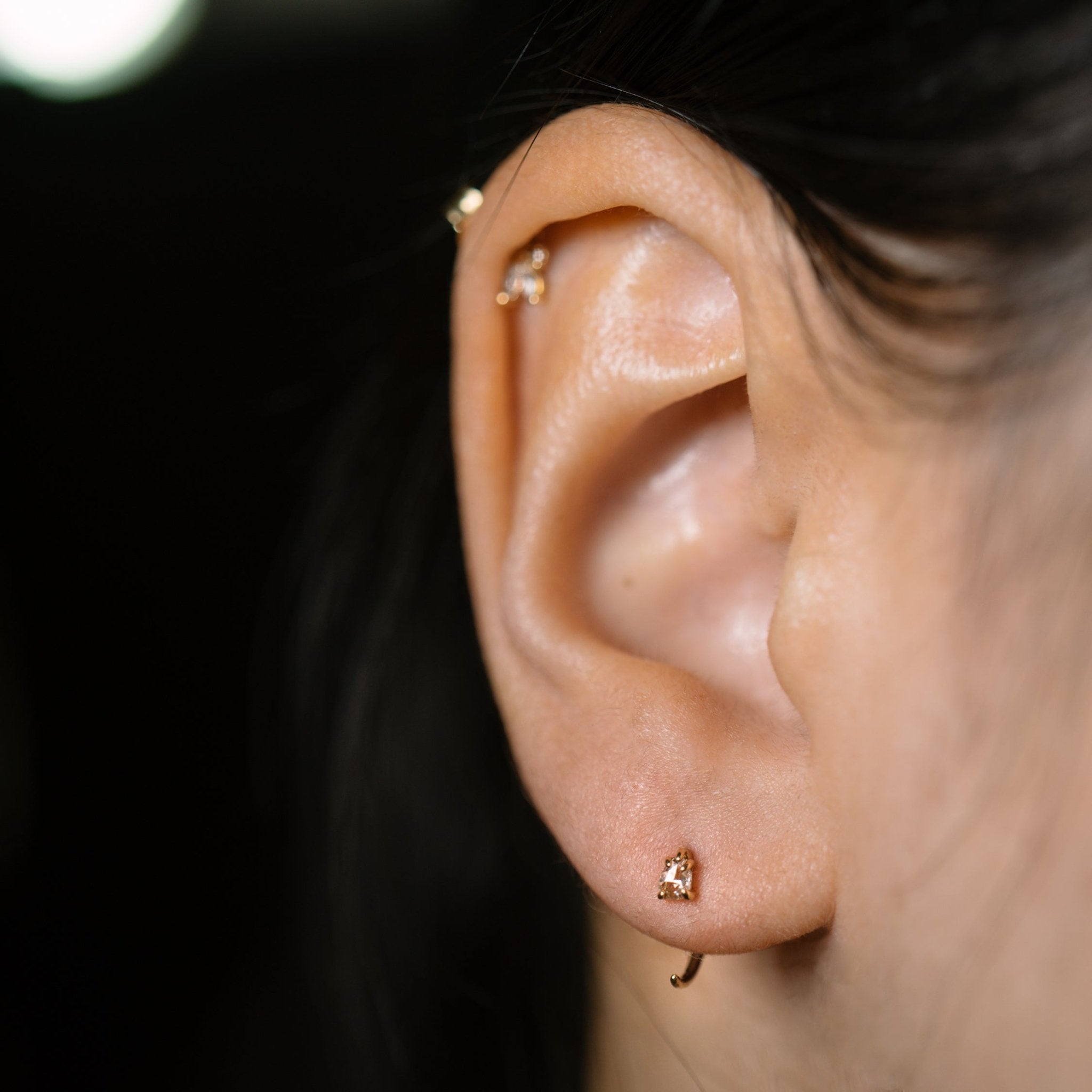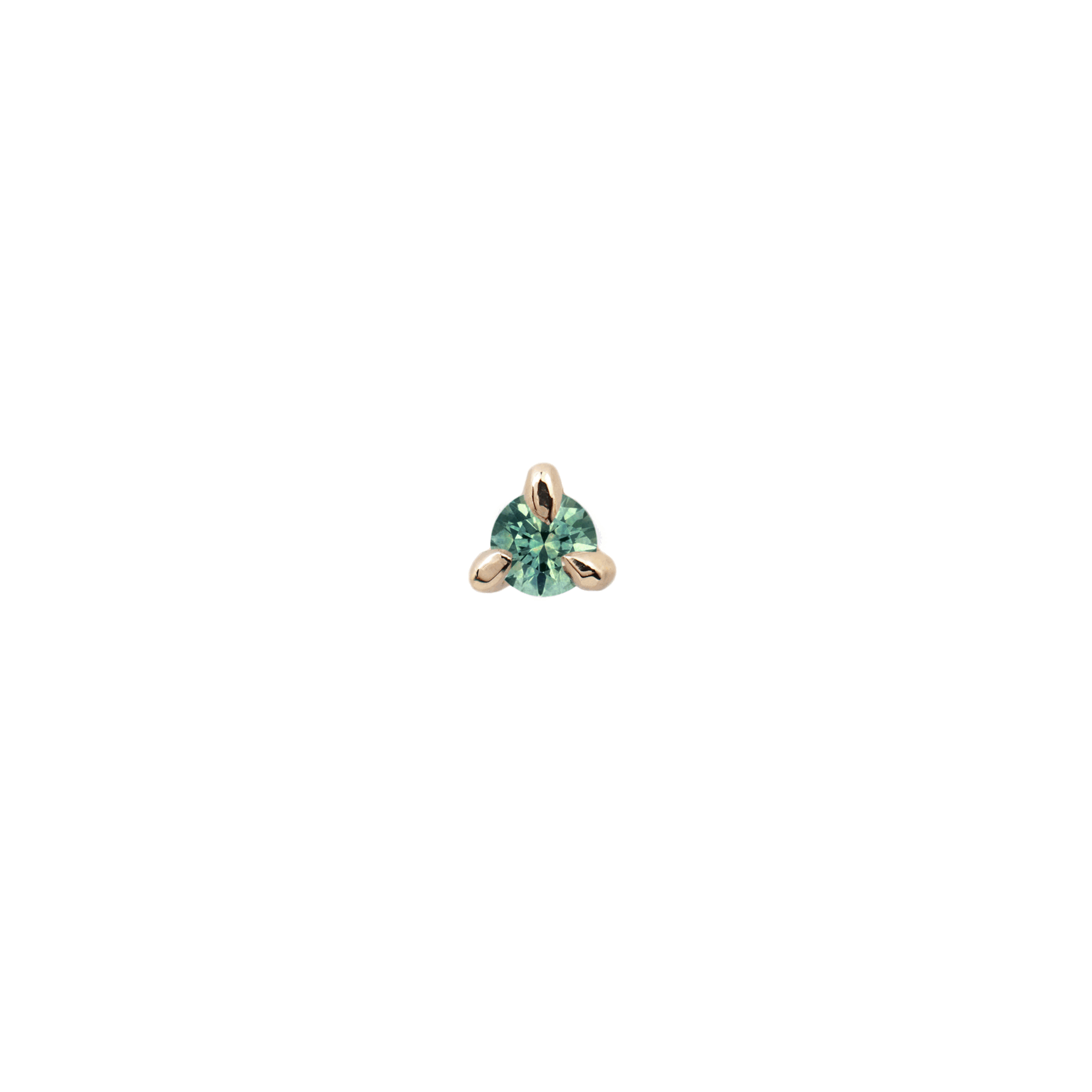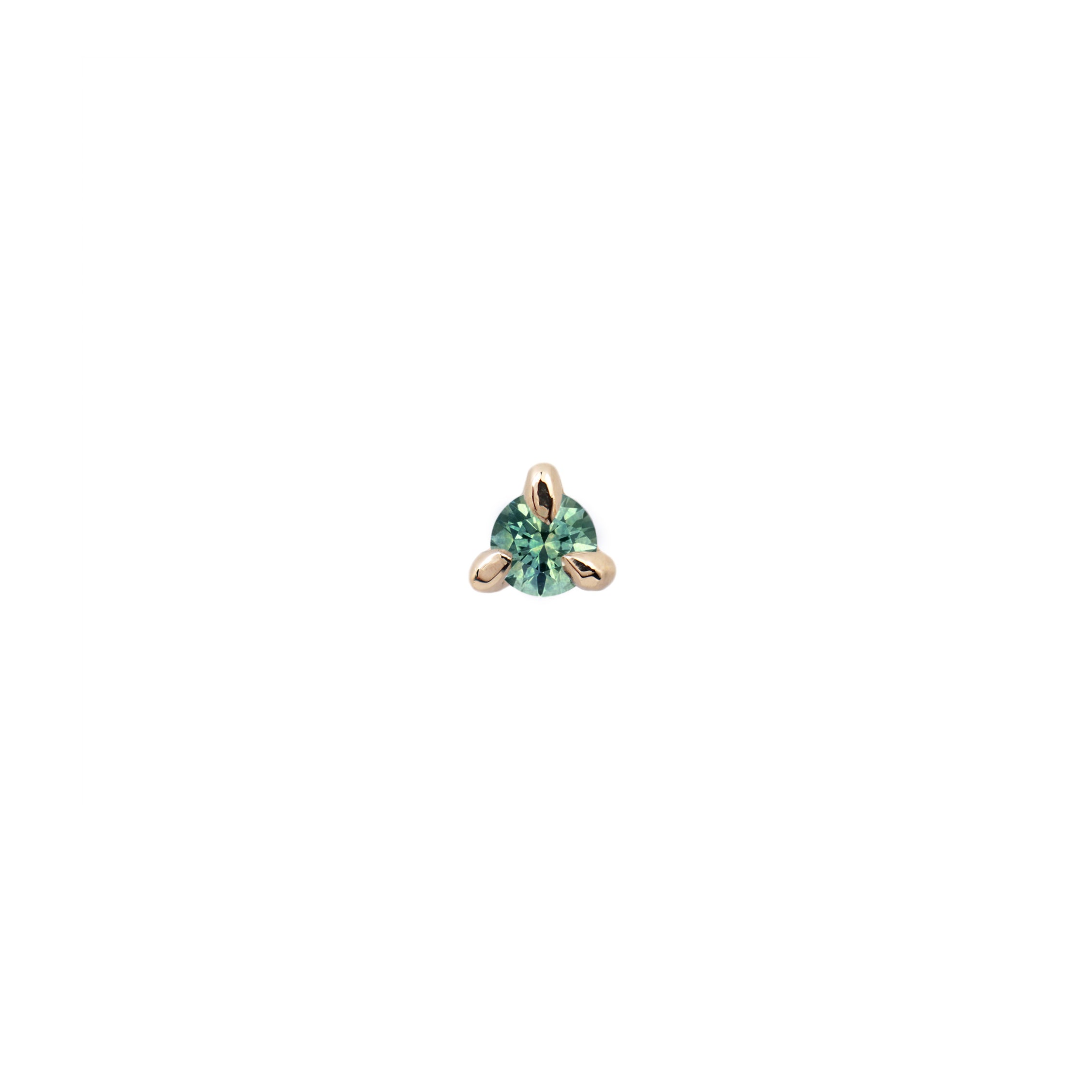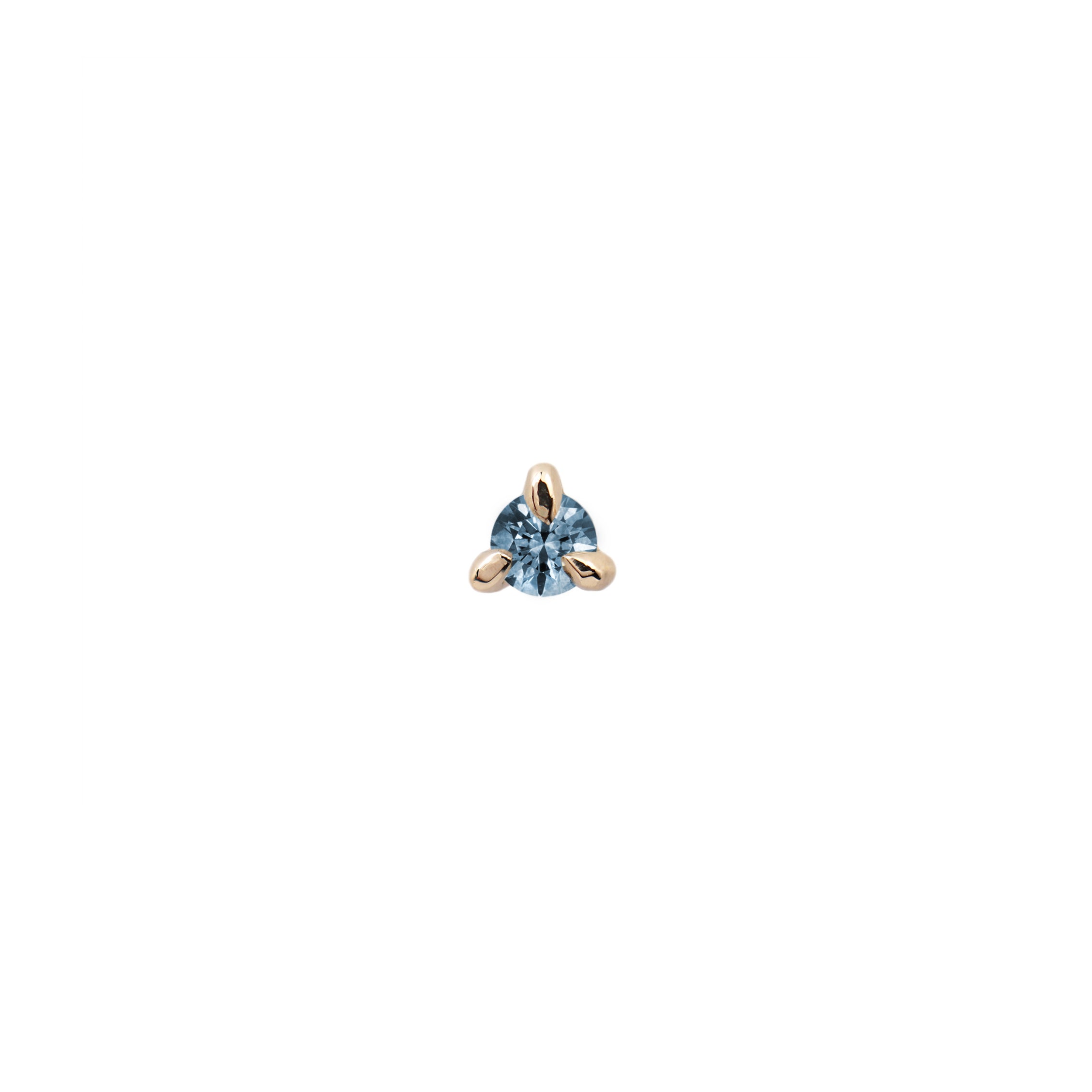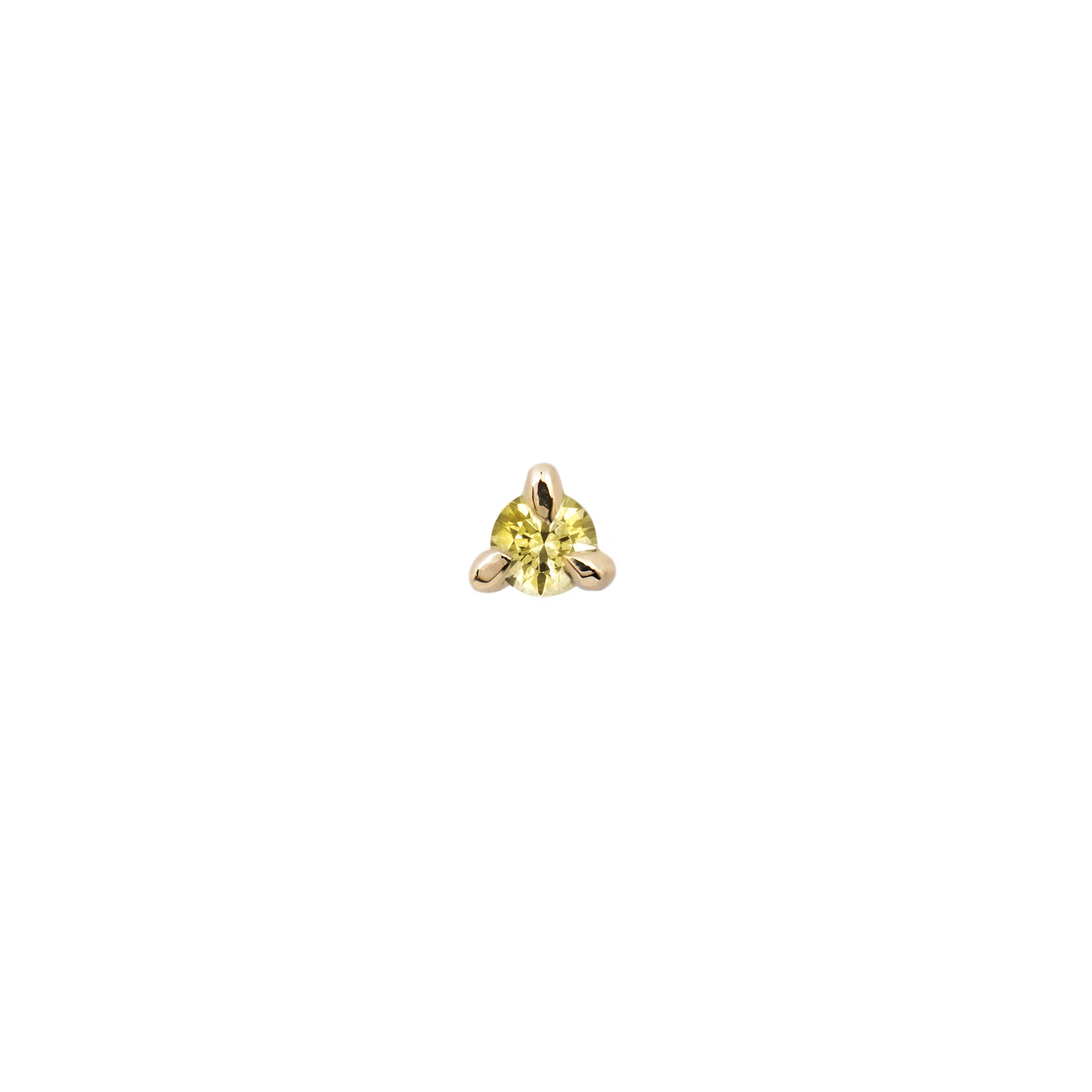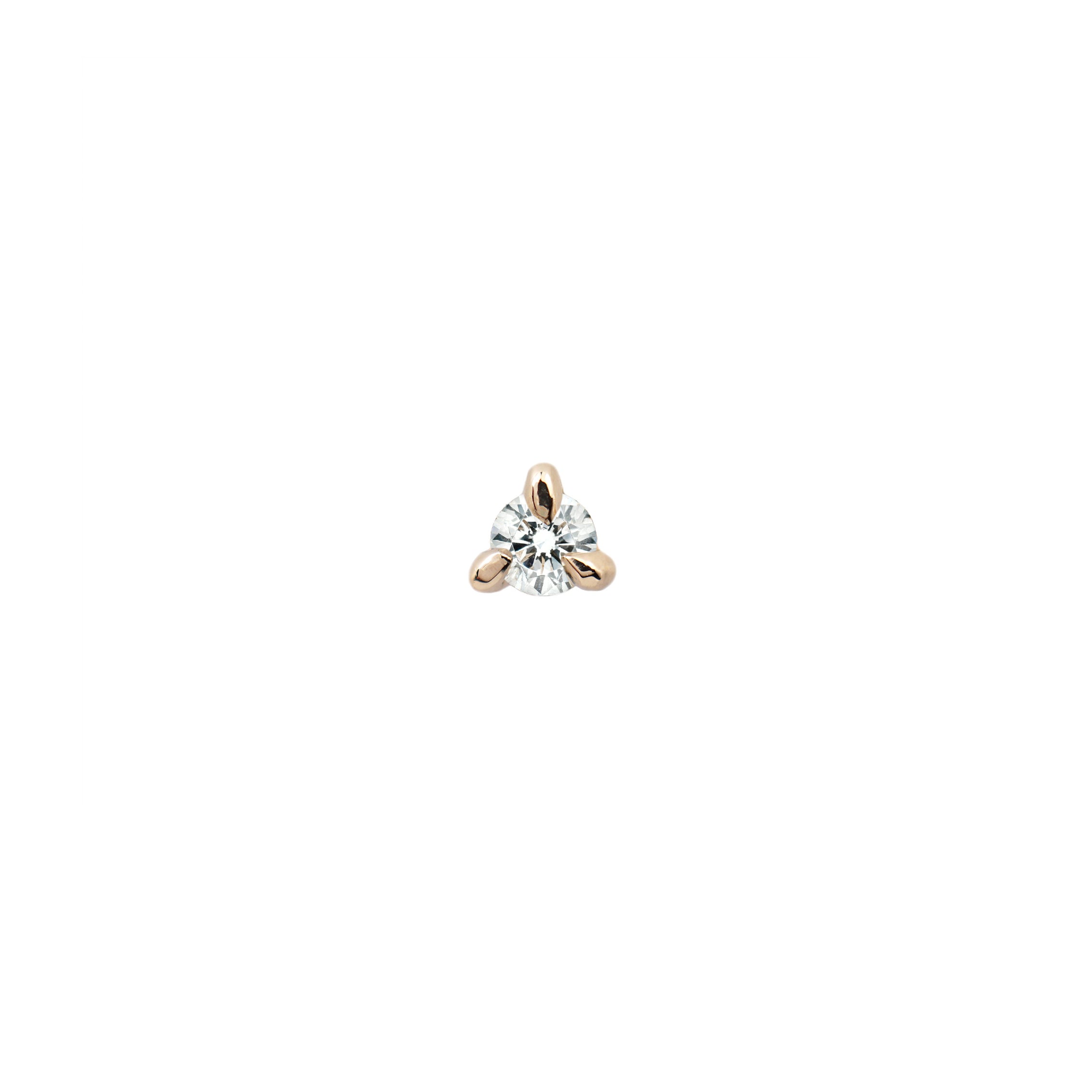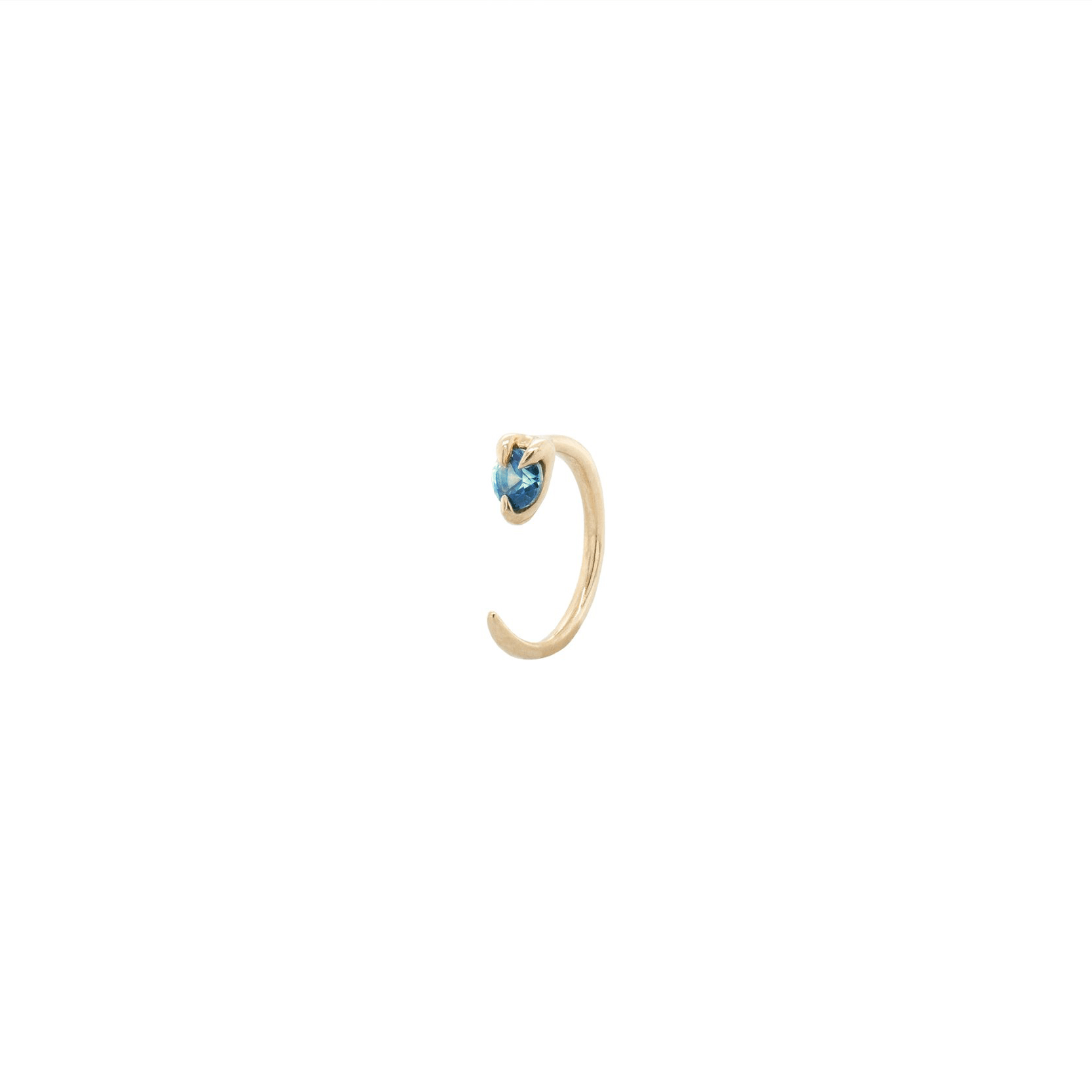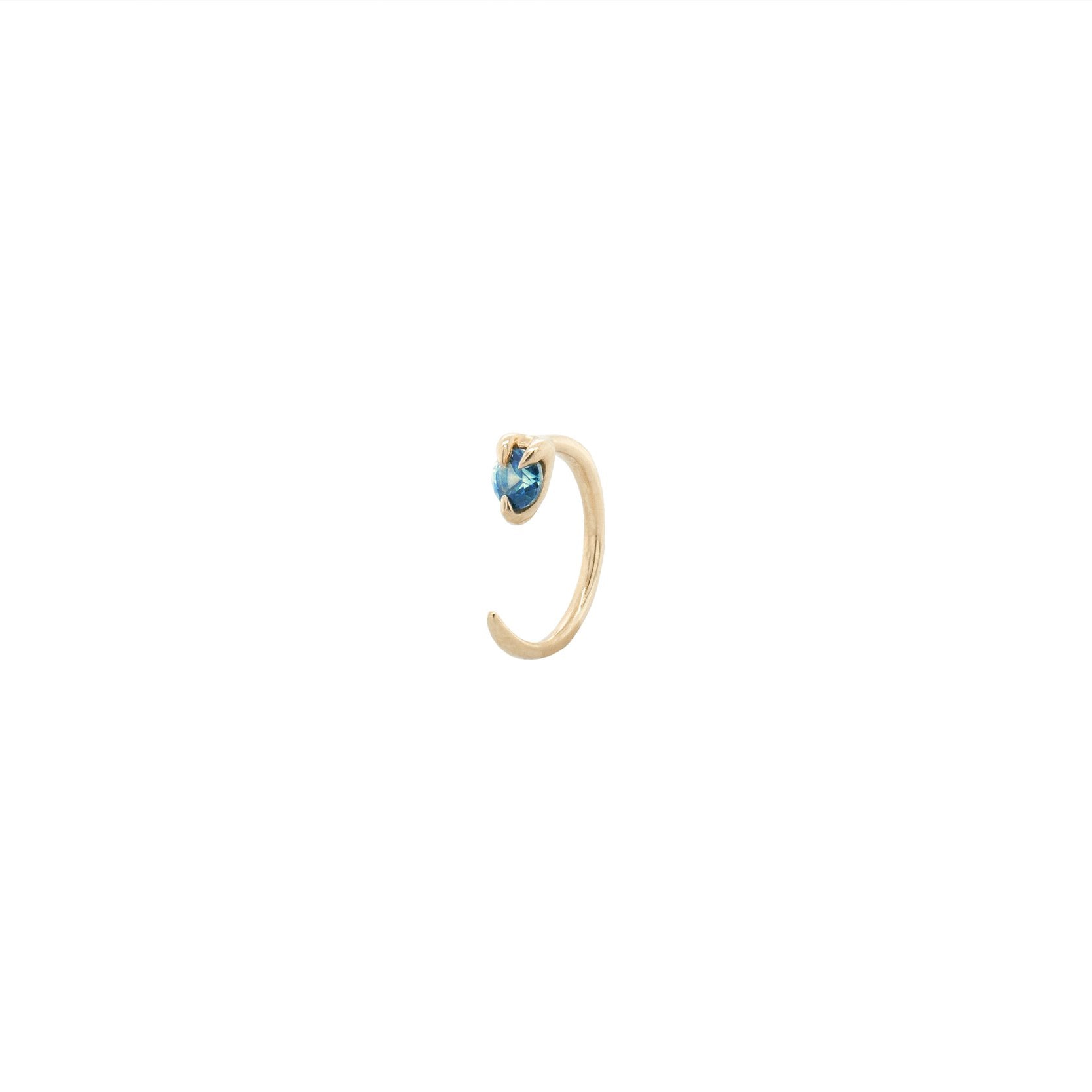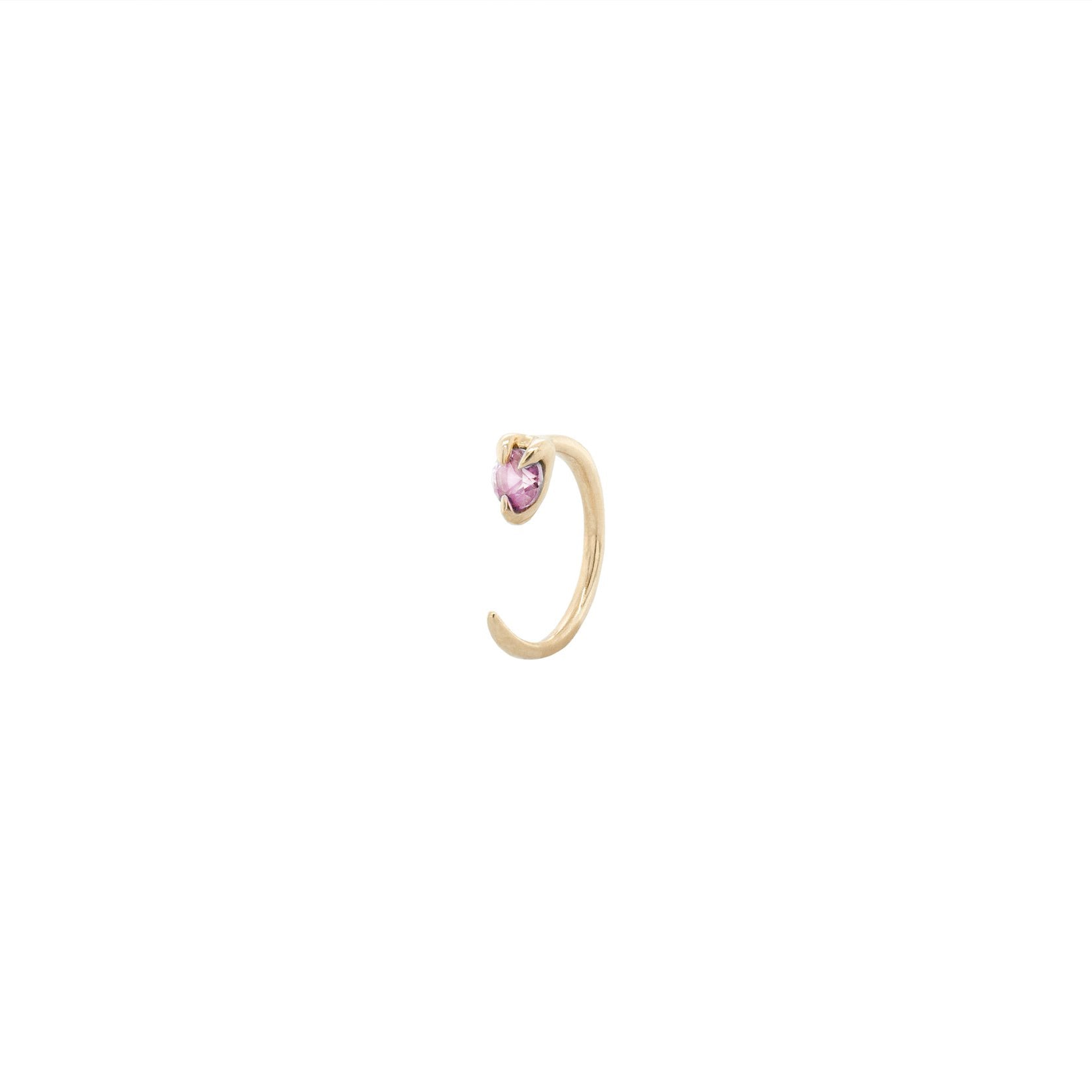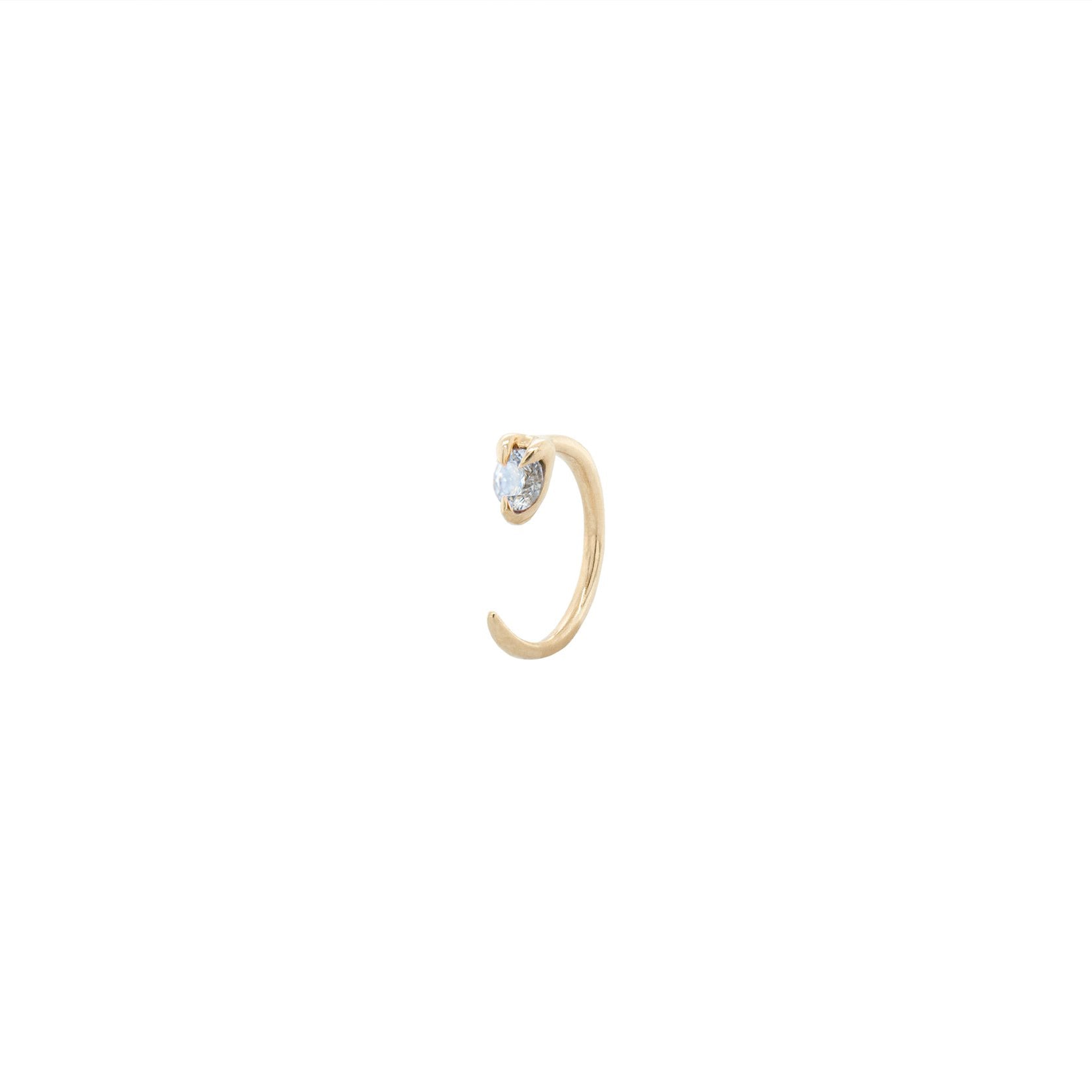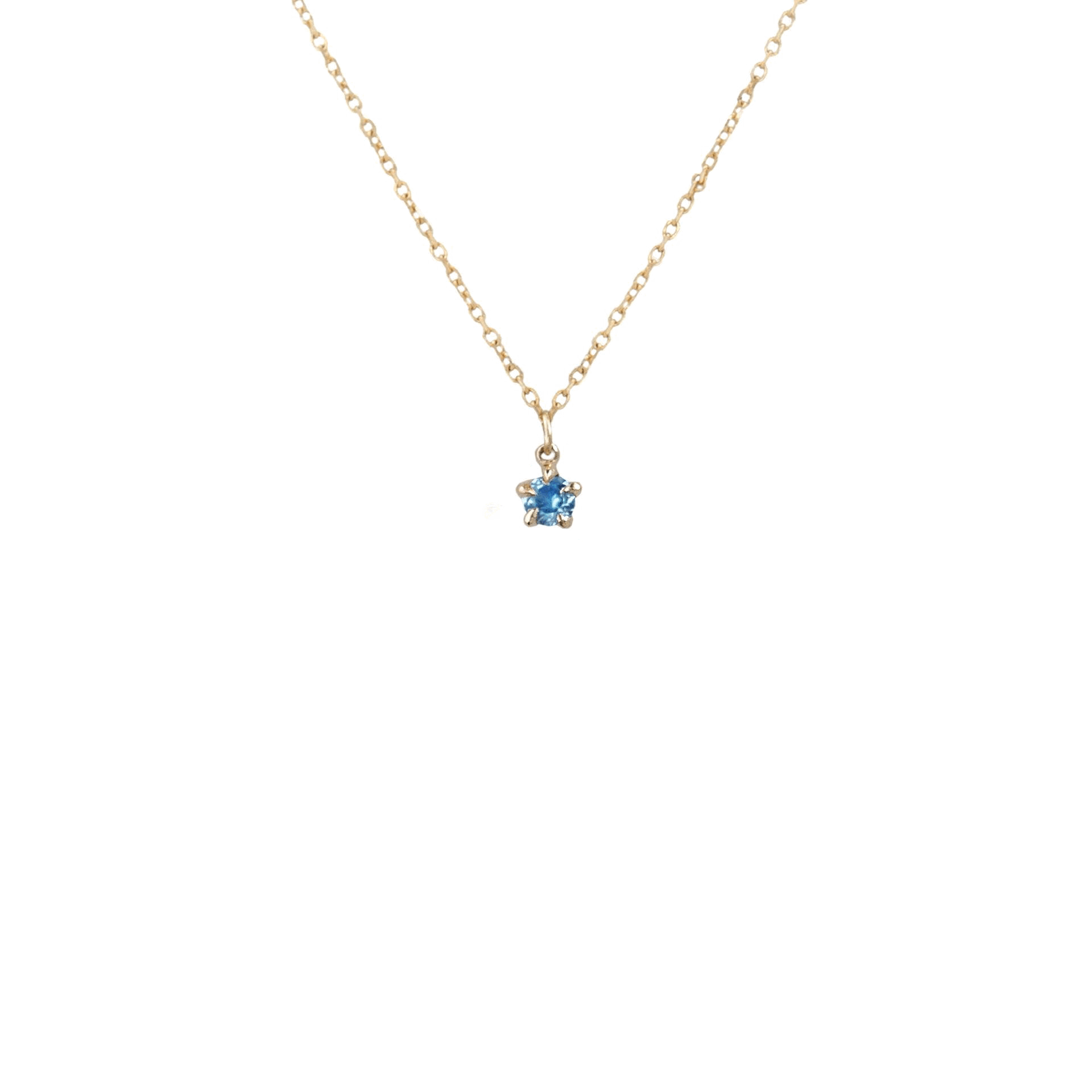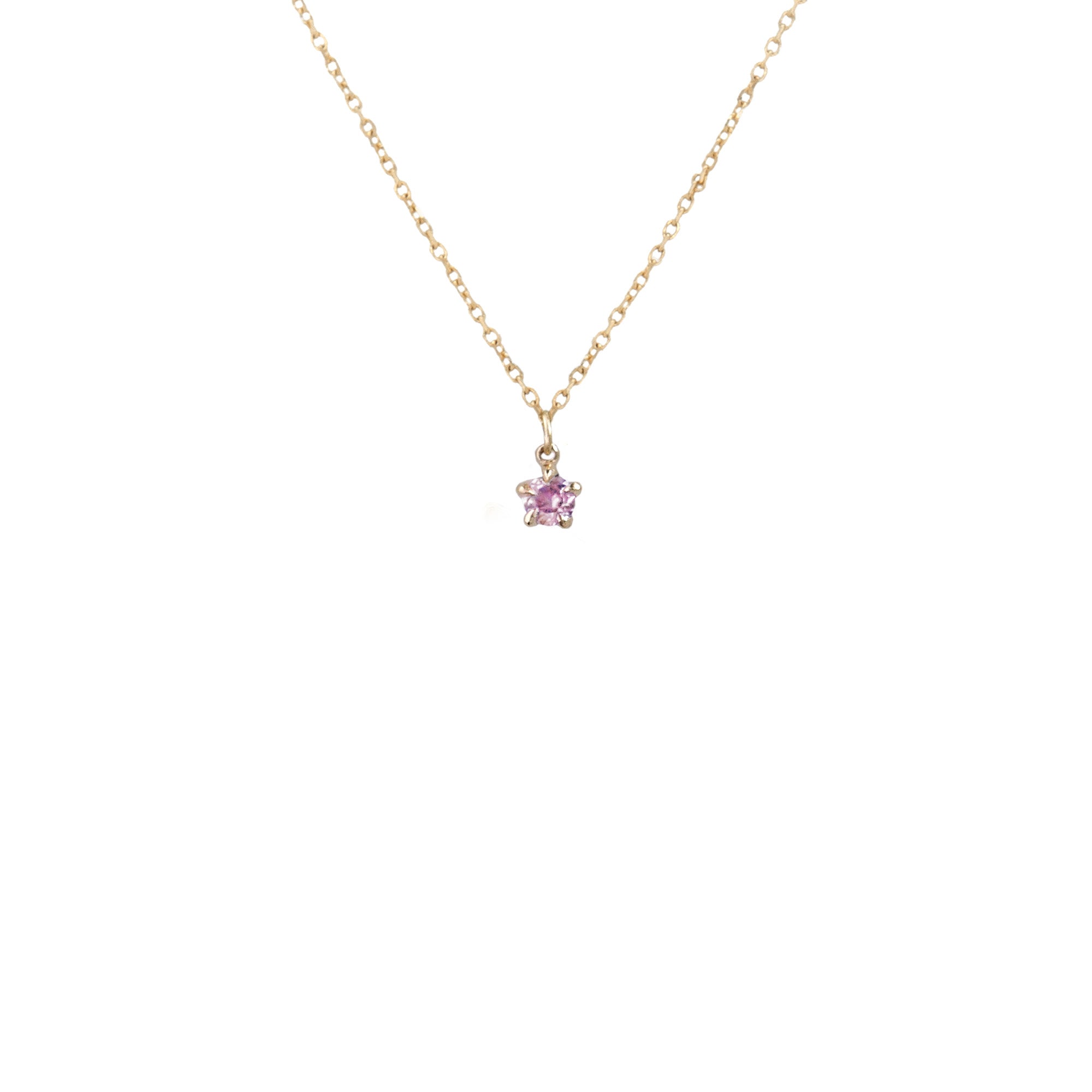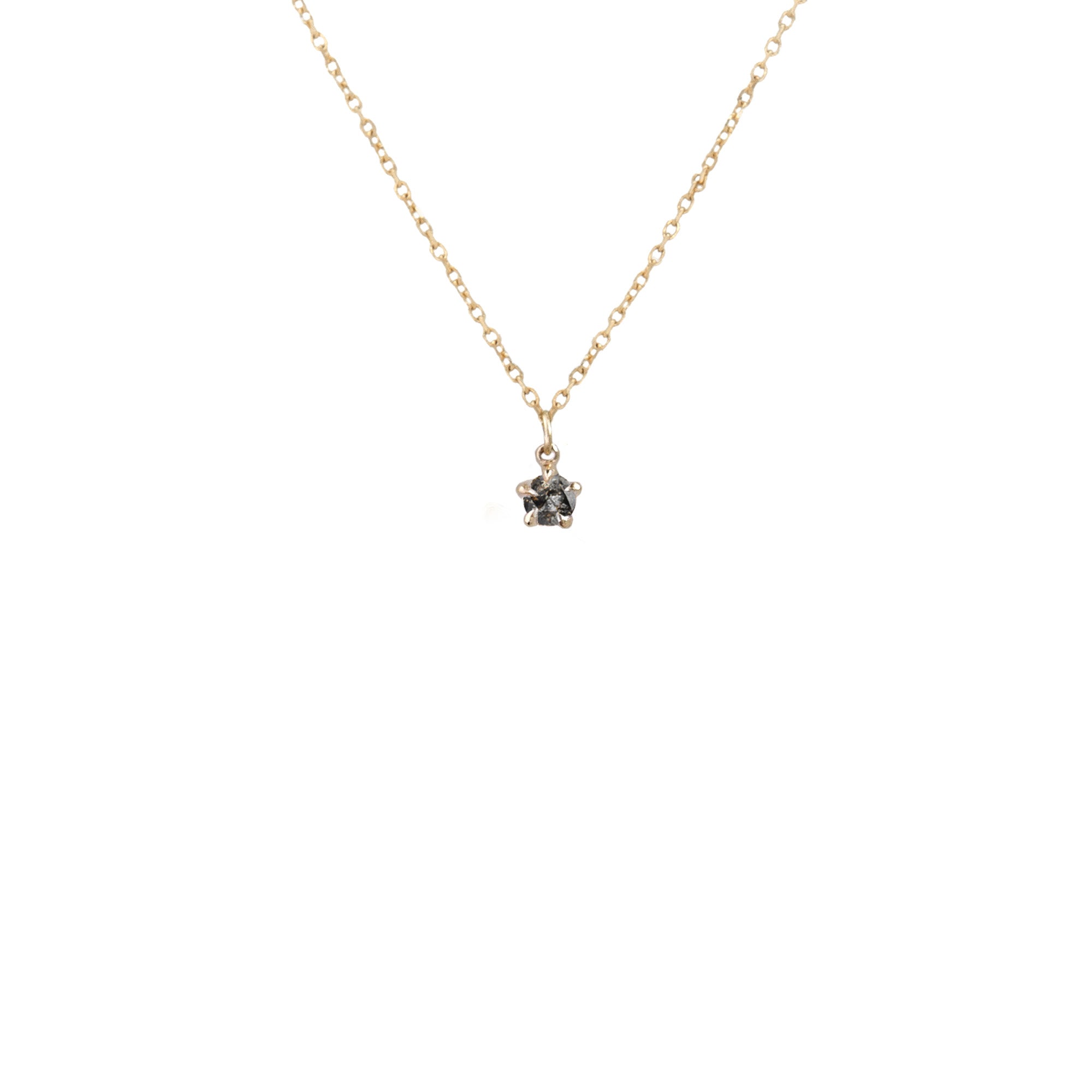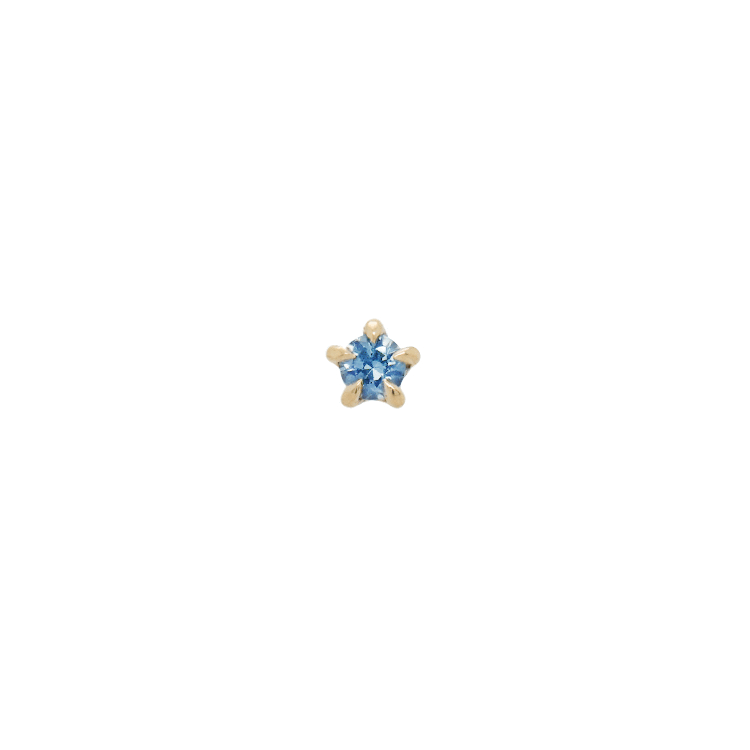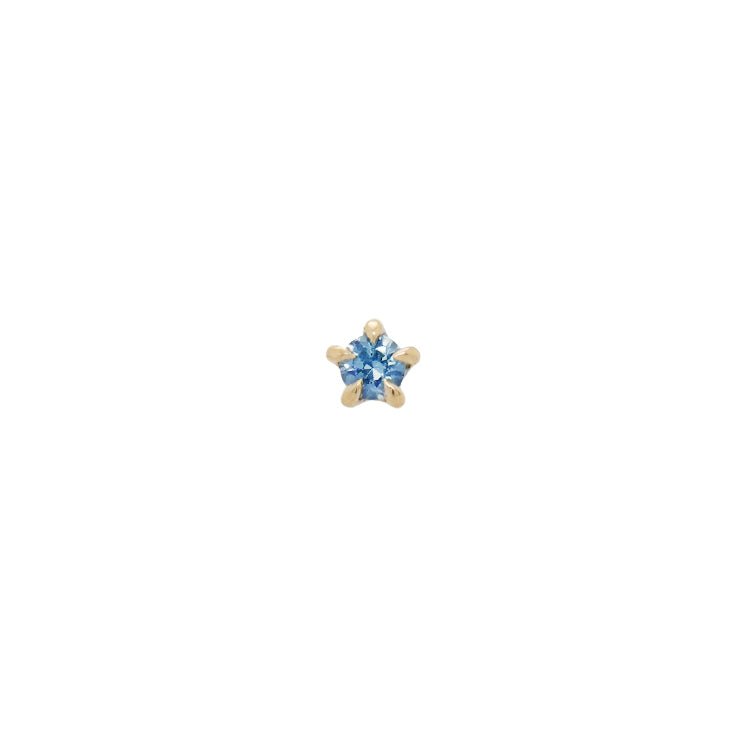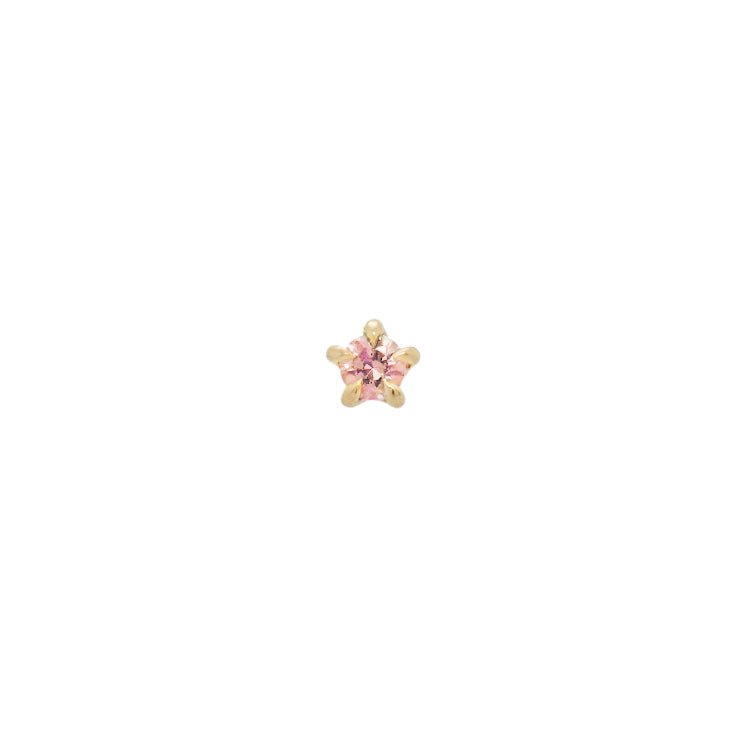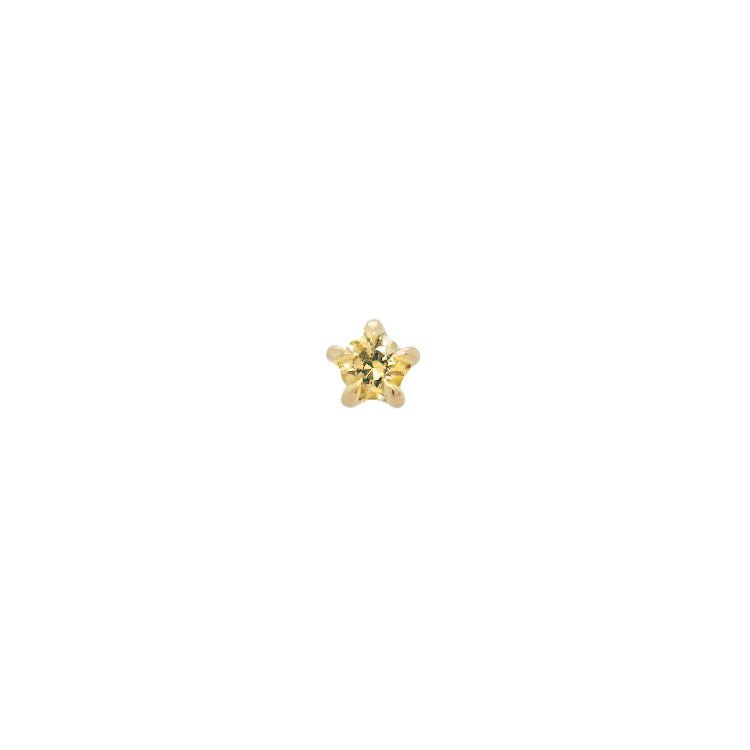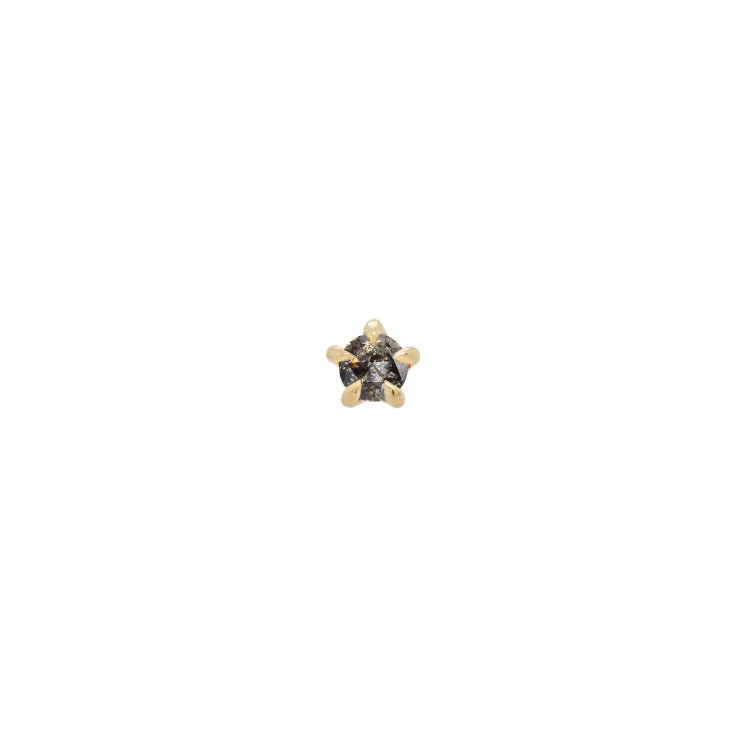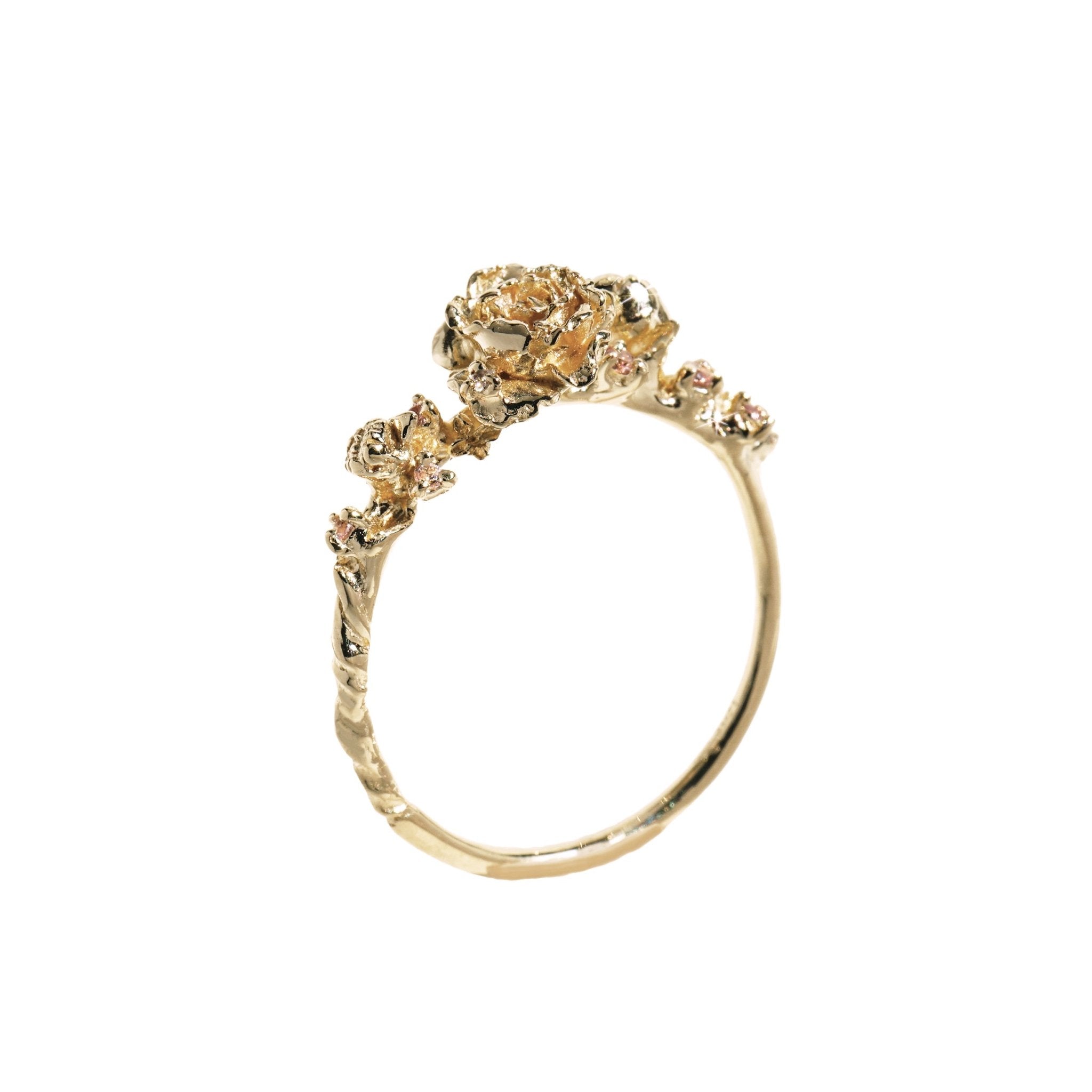What are
Lab Grown Diamonds
Lab-grown diamonds share the same chemical structure as natural, mined diamonds. While mined diamonds are formed in the earth over millions of years through combined heat and pressure, lab diamonds are produced in a lab in a much shorter period, in a simulation of that same environment.
Lab diamonds are graded for the same criteria as mined diamonds, and have the same durability. To the average viewer, mined diamonds and lab diamonds look the same; only a trained gemologist using special equipment can discern the difference.
Lab Grown Diamond Wedding Bands
Our most beloved wedding band styles made especially for you with the finest lab grown diamonds set in solid, glowing gold. From the classic Beacen ring with its gentle contour curves to the bold Ambrosia Circlet and the ethereal White Silk Jasmine ring, these rings will make a stunning sparkling addition to your wedding set stack, or shine brilliantly all on their own.
All of Our Lab Grown Diamonds
The sweetest sparkling drops of crystallized dew to adorn your ears, neck, and hands. Discover all of our lab grown diamond rings, earrings, and necklaces; each design is carved by hand and set in solid 14k gold at our small studio in Toronto.
Diamond Grading Explained
Carat
People often believe that carat refers to the size of a diamond, but it actually refers to the weight. The higher the carat, the more costly the diamond, as diamonds are priced according to their weight and quality.
Colour
A chemically pure diamond consisting of pure carbon would be completely colourless. Colour in diamonds comes from trace elements in the stone (most often nitrogen, which give diamonds a yellowish hue).
Colourless diamonds are graded from D to Z. D, E, and F graded diamonds are considered "colourless", and G, H, I, and J coloured diamonds are considered "near colourless". From there, diamonds start to take on a noticeably yellowish tone (or sometimes brown, or a mix of both). Colour is viewed as the most subjective of the gradings, because sometimes you may prefer the look of a warm coloured stone, or something champagne. When looking for a traditional colourless diamond, we generally would be considering I colour or higher.
Our lab grown diamonds will always be D, E, or F colour, giving them a stunning colourless appearance.
Lab grown diamonds are generally very hard or not possible to source in lower colour grades/champagne tones.
Clarity
During their formation, diamonds can form internal characteristics that are called "inclusions," and external characteristics known as "blemishes." The highest quality diamonds have no visible inclusions and no blemishes at all.
Clarity is divided into 6 categories:
- Flawless (FL): No inclusions and no blemishes visible under 10x magnification
- Internally Flawless (IF): No inclusions visible under 10x magnification
- Very, Very Slightly Included (VVS1 and VVS2): Inclusions so slight they are difficult for a skilled grader to see under 10x magnification
- Very Slightly Included (VS1 and VS2): Inclusions are observed with effort under 10x magnification, but can be characterized as minor
- Slightly Included (SI1 and SI2): Inclusions are noticeable under 10x magnification
- Included (I1, I2, and I3) Inclusions are obvious under 10x magnification which may affect transparency and brilliance. Inclusions are often dark or black, and usually easily visible to the naked eye.
For the most part, anything over an SI1 grading is considered "eye clean," meaning any inclusions are not visible to the naked eye.
Our lab grown diamonds will be VVS1 - VS1 clarity, meaning they will be perfectly clean to the naked eye, with only very minor inclusions that can only be seen under magnification.
Cut
Cut is a diamond characteristic that is often neglected, but is actually the most important factor in a beautiful stone. This is because the Cut determines how the diamond will sparkle and come to life.
For round brilliant diamonds, cut is usually graded on three aspects:
- Make: the overall quality of the cut (angles and proportions, etc.)
- Polish: the quality of the surface finish of the diamond
- Symmetry: the design and proportions of the diamond
Fancy shapes (ie. emerald cut, oval, marquise, pear, cushion, etc) are traditionally only graded for polish and symmetry and do not have Cut (make) gradings.
The grading for these aspects depends on the laboratory assessing the stone: GIA and GCAL use Excellent > Very Good > Good > Fair > Poor, while IGI uses Ideal > Excellent > Very Good > Good > Fair.
Round brilliant cut diamonds have scientifically designed proportions and facets, to the point that there is a possible "perfect" cut against which all round brilliant diamonds are compared. It's important to keep in mind though that in real life, diamonds will be worn in a variety of lighting situations, which will change the way the diamond sparkles and looks. "Perfect" proportions are always great to aim for, but those designed proportions are also generally measured in specific lab lighting.
For fancy shapes, the polish and symmetry are usually the most important factors, with length to width ratios also being an important factor. We generally try to select stones within 'ideal' ratios for each shape. However, it's important to note that shape is very subjective and can be used creatively for achieving different designs.
Antique cuts also usually fall outside the norms of lab grading, usually receiving Fair or Poor cut grades, despite being visually stunning. They don't fit into modern measurements for Cut grades.
Our round lab grown diamonds will have excellent or ideal cut/polish/symmetry. Other shapes will have excellent to very good cut/polish/symmetry.
Fluorescence
Fluorescence in diamonds refers to how reactive the diamond is to UV light. In slightly yellow-hued diamonds (ie. a K colour), strong blue fluorescence can make them appear whiter than they actually are. About 25-35% of natural diamonds have some degree of fluorescence. It usually does not have any impact on the appearance of the diamond, but if a black light were to shine on it, it may have a faint glow.
Grading Laboratories
Though it is the most well-known, the GIA (Gemological Institute of America) is not the only laboratory that grades diamonds.
For a long time, the GIA didn't grade lab grown diamonds at all (this has changed in recent years as lab grown diamonds have become more common and accepted in the jewellery industry). Because of this, many lab grown diamonds are graded by other institutions:
- IGI (International Gemological Institute)
- GCAL (Gem Certification & Assurance Lab)
The centre stones in our lab grown diamond rings will always be accompanied by a report, but depending on availability at the time of purchase, they may be certified by any one of these three labs. Your ring will come with a diamond grading certificate prepared by either the GIA, IGI, or GCAL.
Lab Grown Diamond FAQ
What's the difference between natural and lab grown diamonds?
Lab grown diamonds (also known as lab created diamonds, man made diamonds, and lab diamonds) are chemically and physically the same as natural, mined diamonds. Natural diamonds form in the earth over millions of years, while lab grown diamonds are created in a fraction of that time in a lab. Regardless of origin, they are formed in the same way: as carbon atoms that are put under immense heat and pressure until crystals are formed.
Because lab grown diamonds and natural diamonds are physically the same, they are graded with the same criteria (cut, colour, clarity, and carat) on the same scales. They have the same brilliance and durability as natural diamonds, and to the average viewer they are impossible to tell apart visually. Even trained gemologists require advanced technology to tell the difference between natural and lab grown diamonds.
Lab Grown diamonds will always be laser inscribed to indicate that they have been lab grown (only visible under 30x magnification).
Where are your lab grown diamond rings made?
Like all of our jewellery, our lab grown diamond rings are made entirely by hand in Toronto, Canada by our small team of in-house goldsmiths.
Each ring is modified in wax by hand to suit your unique centre stone before being cast in gold. The ring is then polished and the diamonds are set, before receiving its finishing touches and being carefully inspected for quality.
How long will it take to make my lab grown diamond ring?
Our lab grown diamond rings have the same production timeline as the rest of our engagement rings, which can fluctuate throughout the year. Please refer to the quoted timeline beneath the 'Add to Cart' button for the most accurate estimate, and allow for up to 10 weeks.
If there is a particular date you need to receive your ring by, please make a note of it at checkout.
Can you make me a ring using a lab grown diamond in a shape or size not listed?
Maybe! Lab grown diamonds are not available in all diamond cuts, so depending on what you are looking for, we may or may not be able to source it for you.
If you want a ring with a diamond option that isn't listed, such as a carat weight between the provided options or a different cut, please submit your request using our bespoke form here.
I have my own lab grown diamond; can you put it in a ring for me?
At this time, we are not able to work with customer supplied stones, metal, or pieces to be disassembled/re-made into something new, including lab grown diamonds.
We also do not sell our rings without the centre stone.
Do you work with fancy coloured lab grown diamonds or other lab grown stones?
At this time, we only work with colourless lab grown diamonds. We do not work with fancy coloured or enhanced lab grown diamonds or other lab grown gemstones (such as sapphires, rubies, emeralds, alexandrites, moissanites, etc).
Can you help me if I need my lab grown diamond ring adjusted after I've received it?
If any sizing or additional adjustments must be made to the design after it's received, we will help you ship the piece back to us (please contact us for shipping details before shipping the piece back). The shipping, sizing and adjustment costs will be the responsibility of the customer.
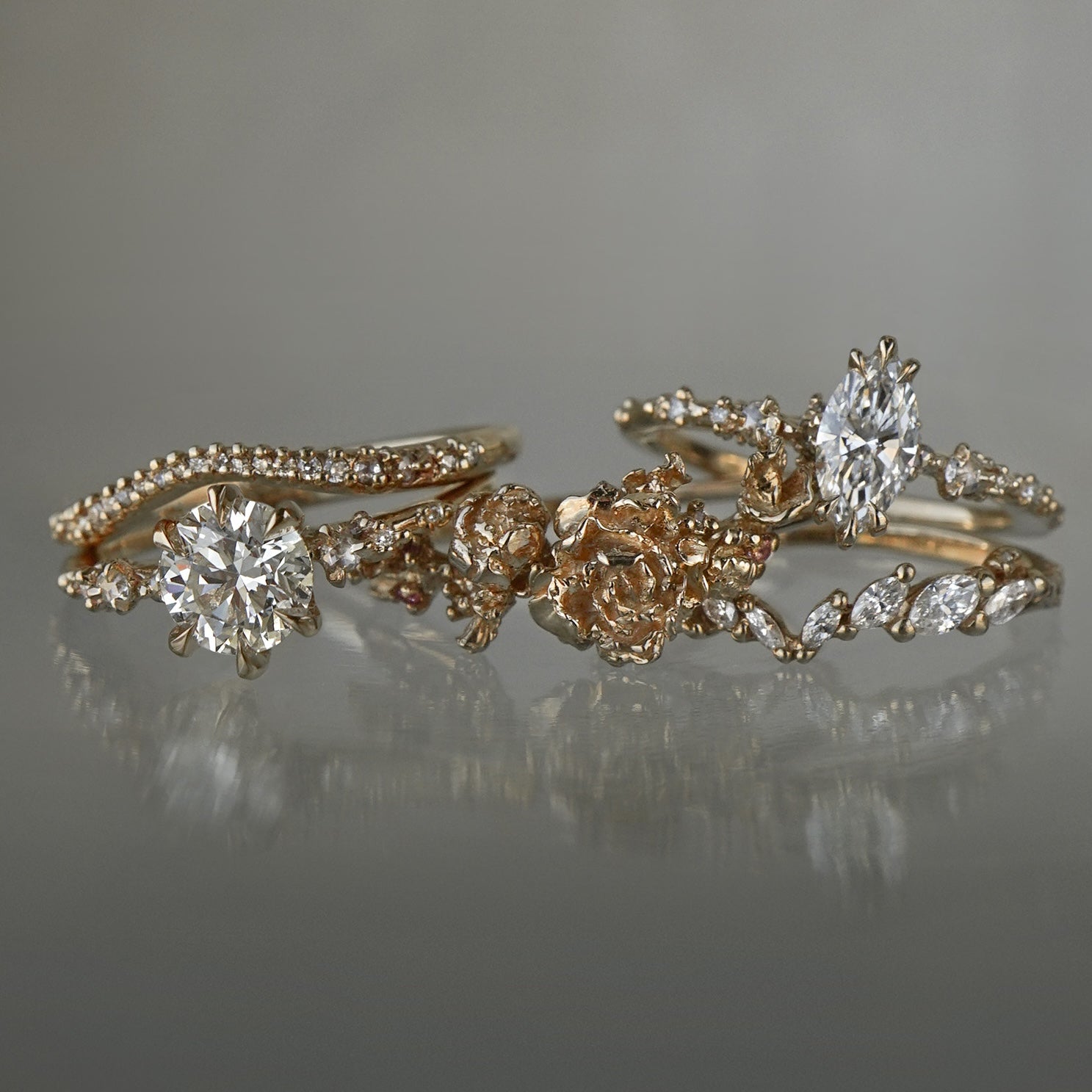
Shop the look

